-
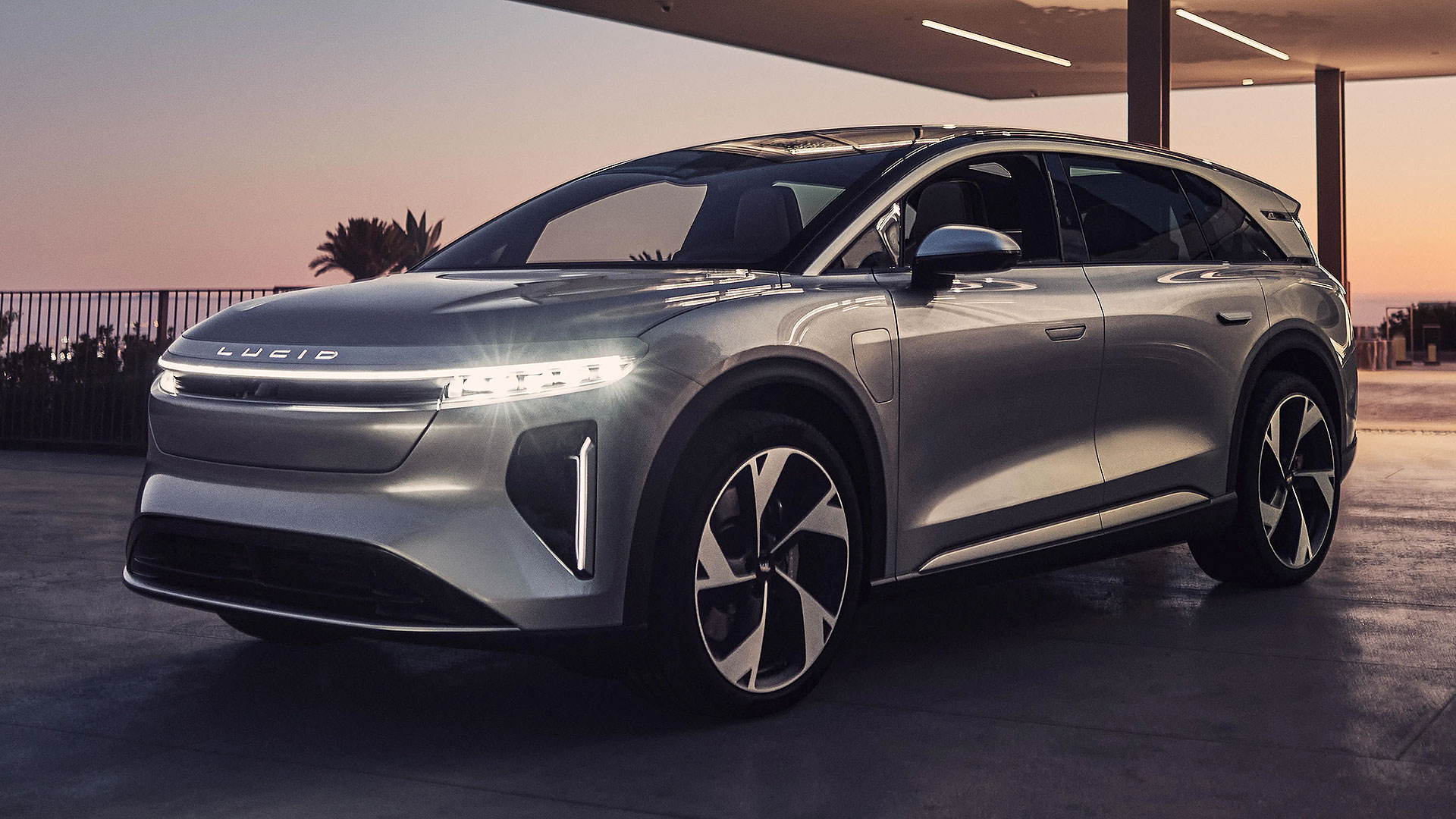
From humble origins to prestige and electrified comfort
© LucidLuxury SUVs are one of the most important segments of the new car market, combining comfort, quality and versatility with the ability to tackle rough terrain when needed.
Following the reveal of the radical electric Lucid Gravity at the LA Auto Show, we’ve taken a look at how the luxury SUV established itself in North America.
Expect leather-clad cabins, off-road ability and just a hint of wood grain exterior trim.
-
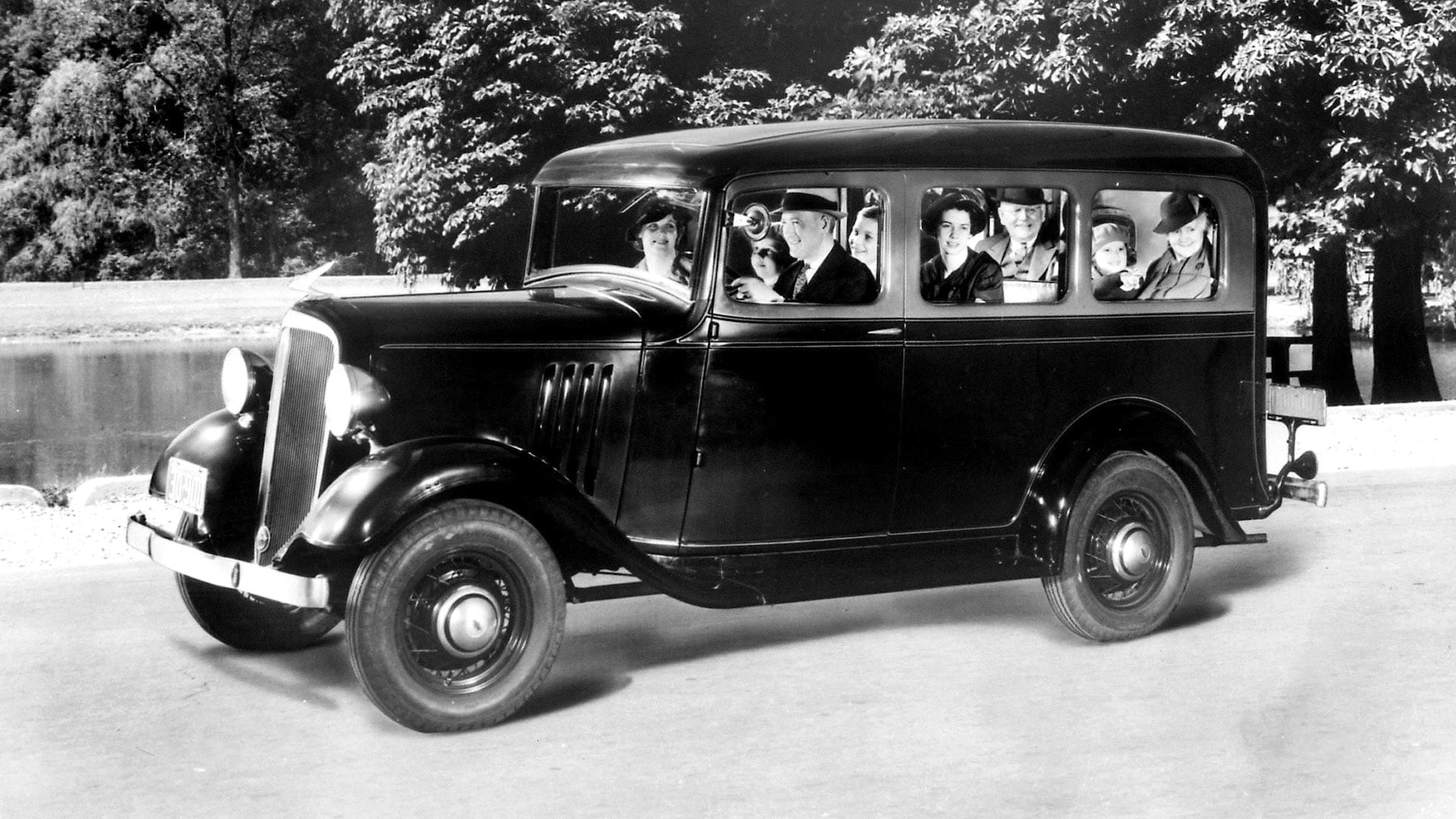
1935 Chevrolet Carryall Suburban
© ChevroletThe origins of the SUV itself are rooted in the era following the Great Depression. Chevrolet mounted a two-door station wagon body onto a half-ton truck chassis, creating the first Suburban.
It sparked a nameplate that has become the longest-running in the automotive industry, with the Suburban in continuous production for 85 years.
Seating for up to eight could be found inside, with the seats also able to be removed for extra luggage space. However, the Carryall Suburban was not a lesson in luxury – this was a practical vehicle aimed at commercial customers.
-
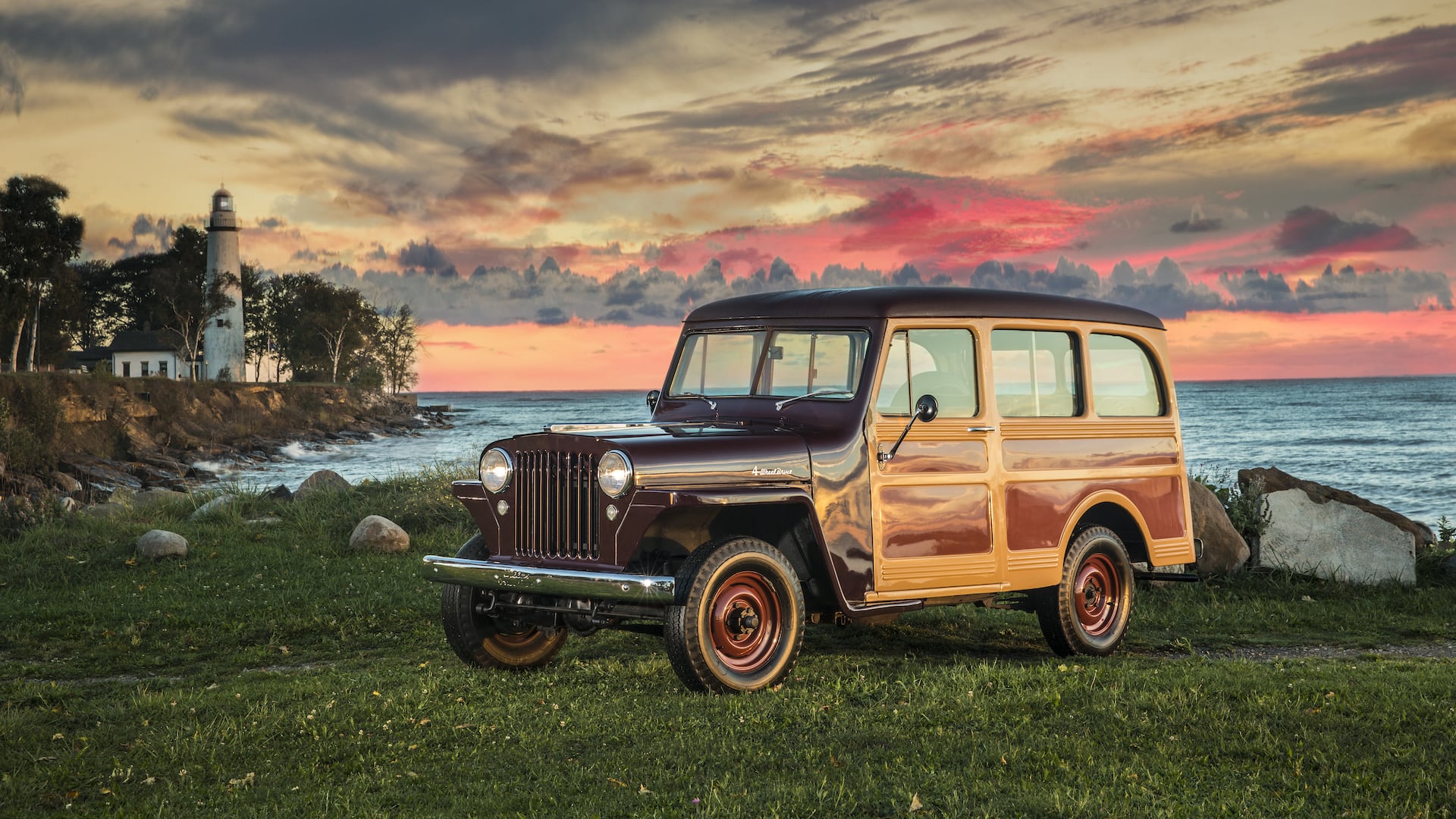
1946 Willys Jeep Station Wagon
© JeepFollowing World War II, Willys Jeep introduced what is considered to be the first all-steel station wagon designed for private buyers. Intended to look like a woodie wagon, the panels for the Jeep were made by suppliers who usually stamped refrigerator panels.
Luxury trimmings were initially limited, until a Station Sedan version was introduced in 1948. This promised car-like comfort, a six-cylinder engine, and a curious ‘basket weave’ trim on the body panels.
Jeep would then introduce the option of four-wheel drive in 1949, arguably making this the first true SUV.
-
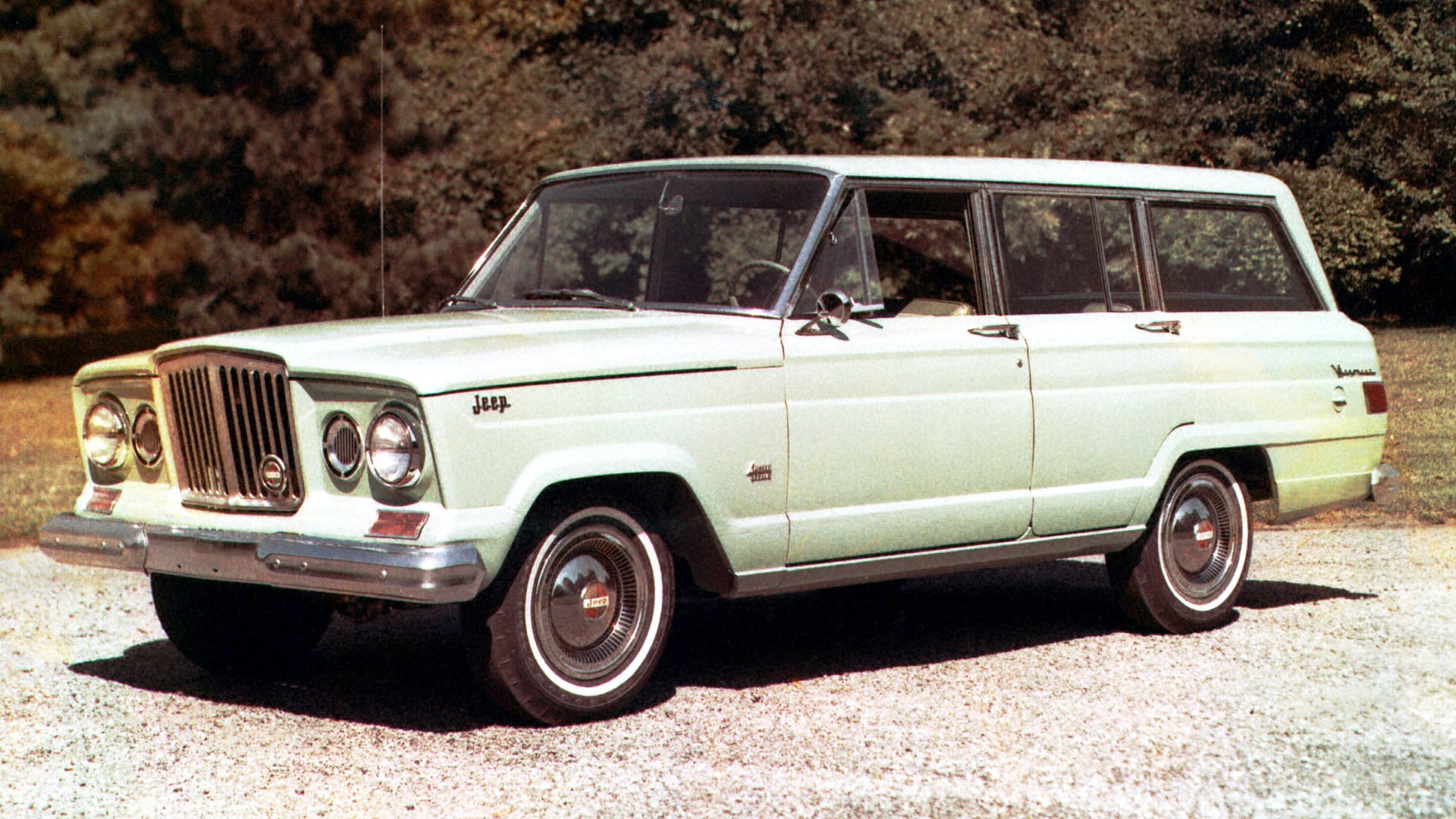
1963 Jeep Wagoneer
© JeepJeep would also be responsible for first marketing a model specifically designed to be a luxurious SUV. Launched in 1963, the SJ Wagoneer combined a full-size body on frame construction with two- and four-door body styles. Four-wheel drive was also available, as was a choice of manual or automatic transmissions for the 230-cubic inch six-cylinder engine.
Suspension settings were tuned to offer car-like comfort, whilst 1964 would see the introduction of optional air conditioning. A V-8 engine would become available in 1965, with Jeep continuing to enhance the level of interior comfort as the model range developed.
-
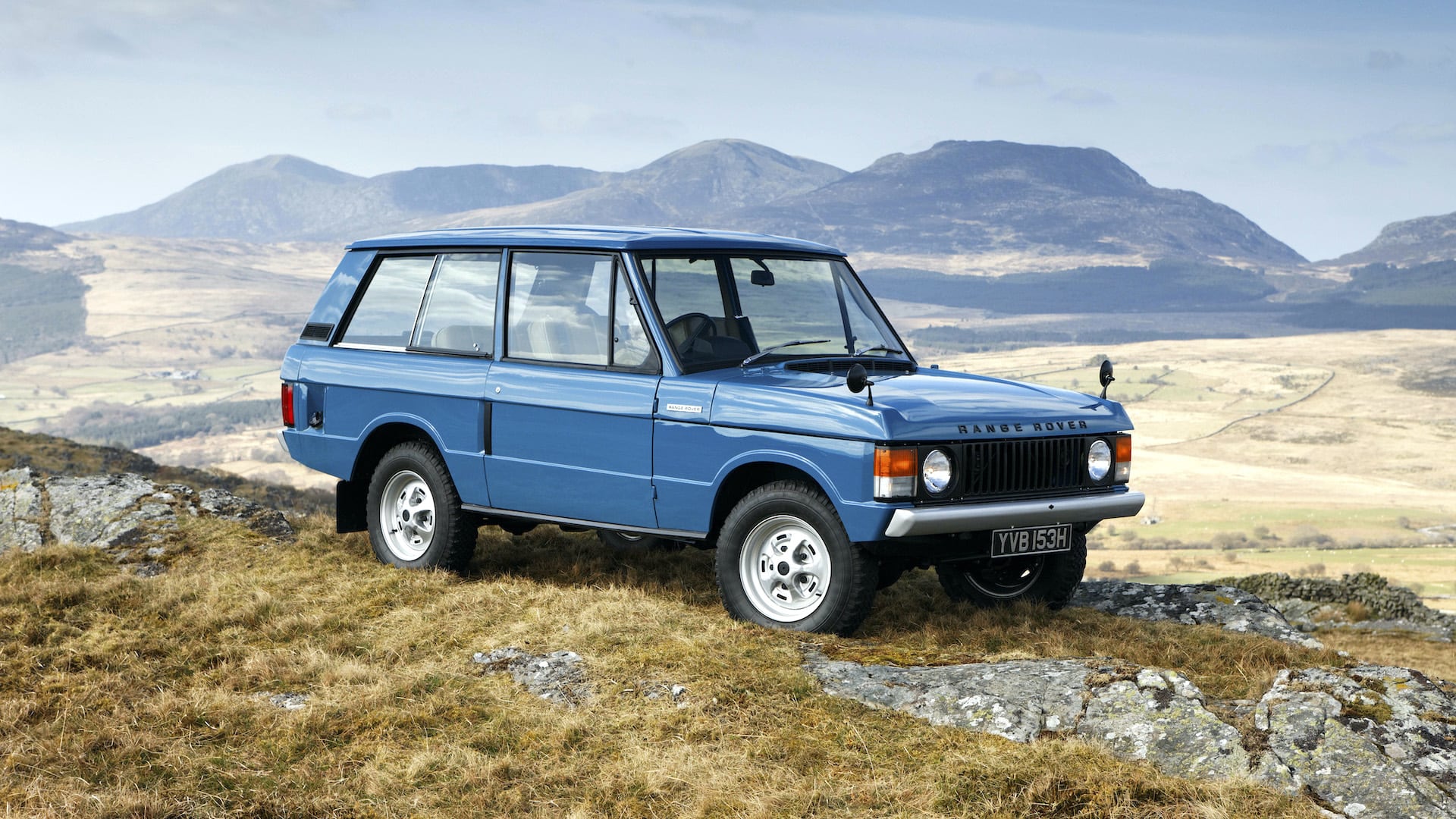
1970 Range Rover Classic
© Jaguar Land RoverInfluenced by the growing SUV market in the United States, Land Rover began looking at how it could get in on the action. Chief Engineer Charles ‘Spen’ King began the development of the first Range Rover in 1967, with the Buick V-8 engine considered a key component to use.
Permanent four-wheel drive, coil suspension, and disc brakes made the Range Rover an effective performer both on and off-road. Early models only came with a two-door body, with Land Rover waiting until 1981 to launch a four-door version.
Produced until 1996, the original Range Rover would become more luxurious over time. Air suspension was added in 1993, along with a long-wheelbase model for increased rear legroom.
-
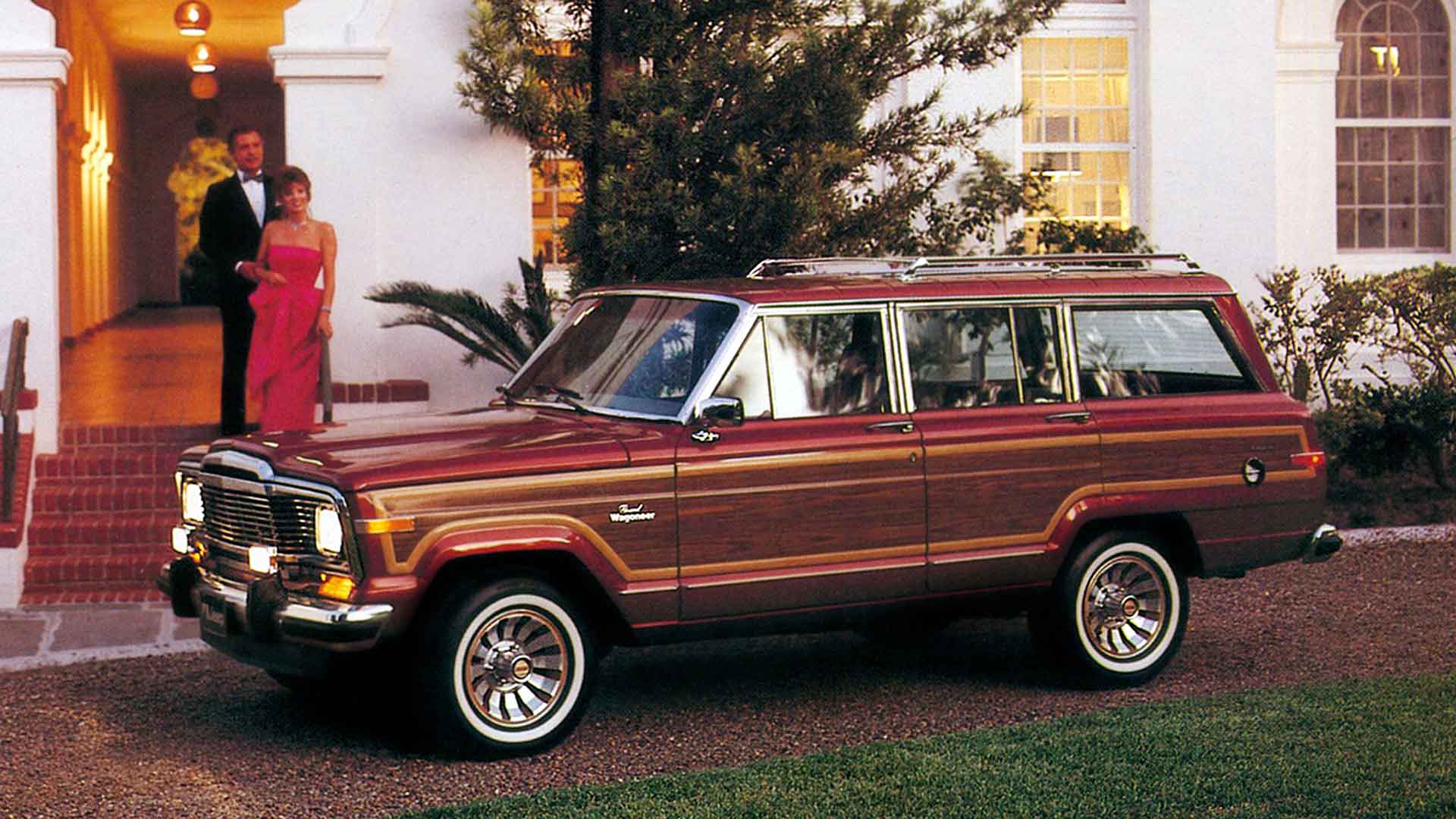
1984 Jeep Grand Wagoneer
© JeepAMC-owned Jeep may have launched a new unibody Cherokee in 1984, but it continued making its traditional full-size SUV as well. Now badged as the Grand Wagoneer, only one trim line was offered, with almost every luxury option included.
Exterior wood grain trim proved to still have appeal, whilst Jeep loaded Grand Wagoneers with climate control, leather-trimmed power seats, and 15-inch alloy wheels. Production would continue until 1991 under Chrysler ownership, with the classic 360-cubic inch V-8 engine retained.
-
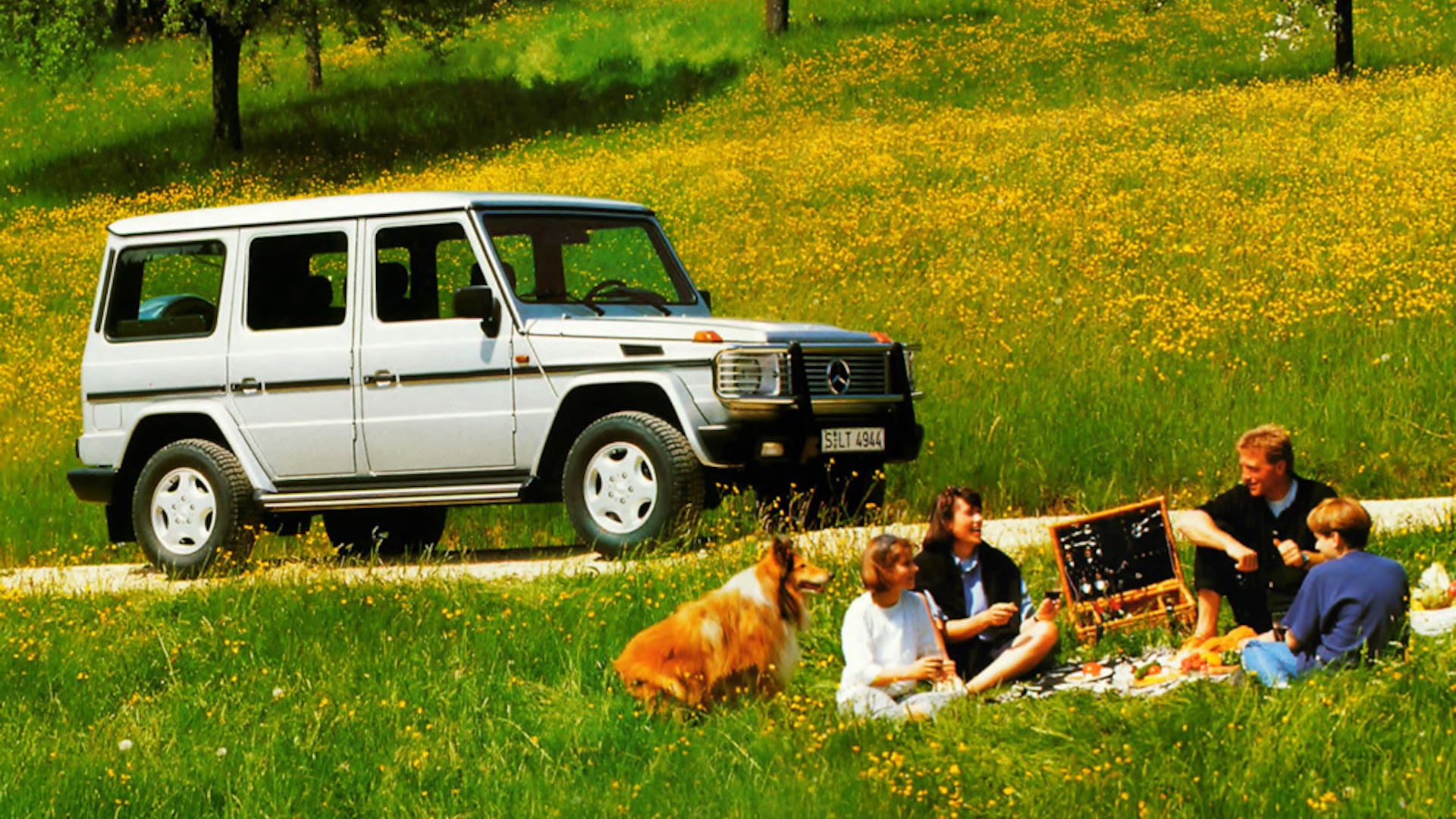
1990 Mercedes-Benz G-Class 463
© Mercedes-BenzOriginally launched in 1979 for use by farmers and the military, the original G-Wagen was a pure utility vehicle. However, an update in 1990 saw the name changed to G-Class, with Mercedes-Benz developing the level of luxury offered by the body-on-frame 4×4.
Although it retained features like electronic-locking differentials, new leather seats and wood trim showed the new direction for the G-Class. The launch of a convertible model in 1997, along with an AMG-powered G 55 performance version, reinforced these new ideas.
The 463-version continued in production until 2018, where it was replaced with an even more extravagant and luxurious G-Class.
-
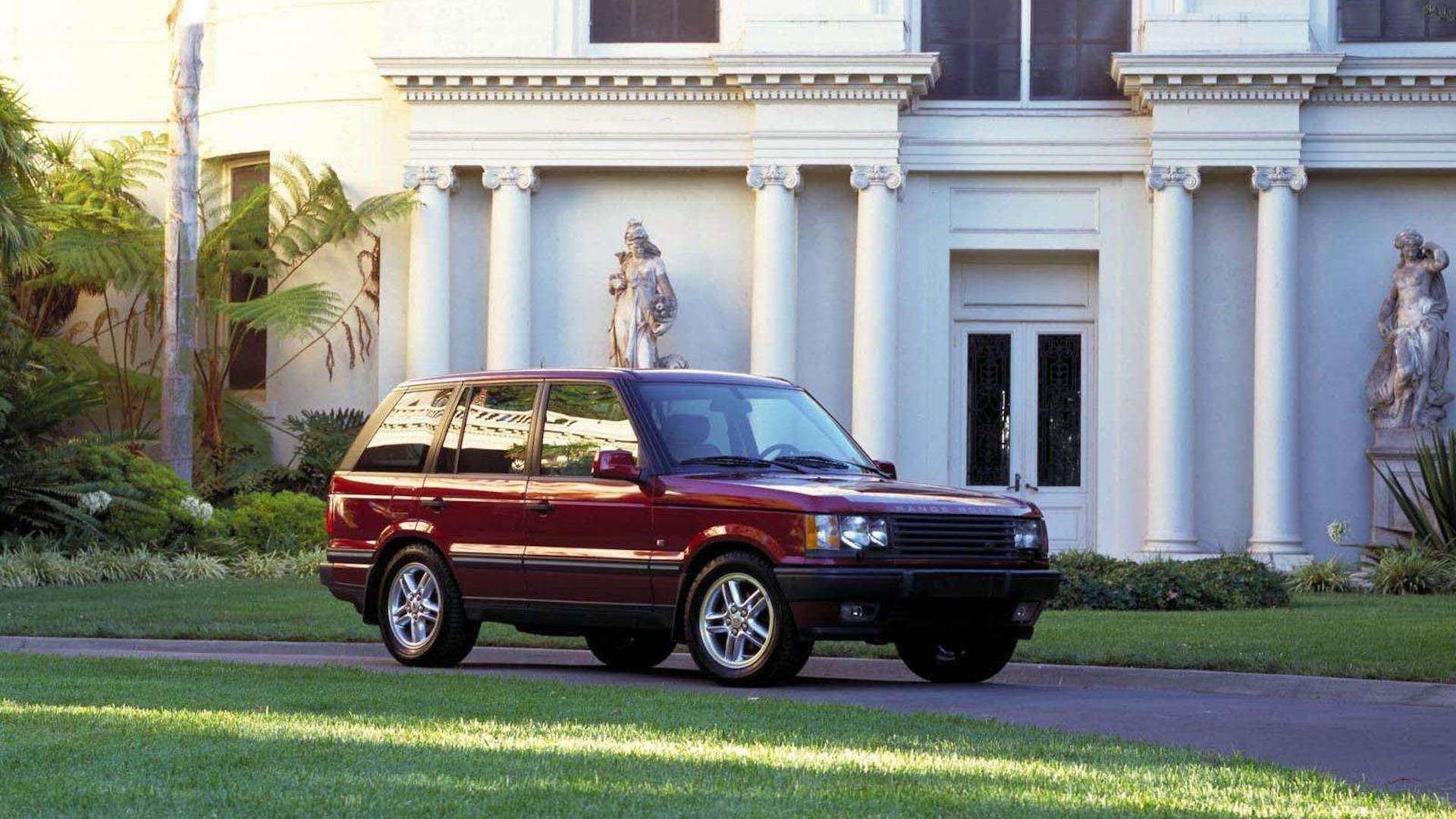
1991 Oldsmobile Bravada
© GMA rebadged variant of the Chevrolet Blazer / GMC Jimmy, the original Bravada was the first truck offered by Oldsmobile since 1920. It would be one of the earliest mid-size luxury SUVs sold in the American market, even if the first-generation would last for only three years.
All-wheel drive was standard, along with a 4.3-liter V-6 and an automatic transmission. Body-colored exterior trim, leather seats, and keyless entry were all standard equipment. Later models would gain gold exterior badging, helping to try and push the premium feel.
-
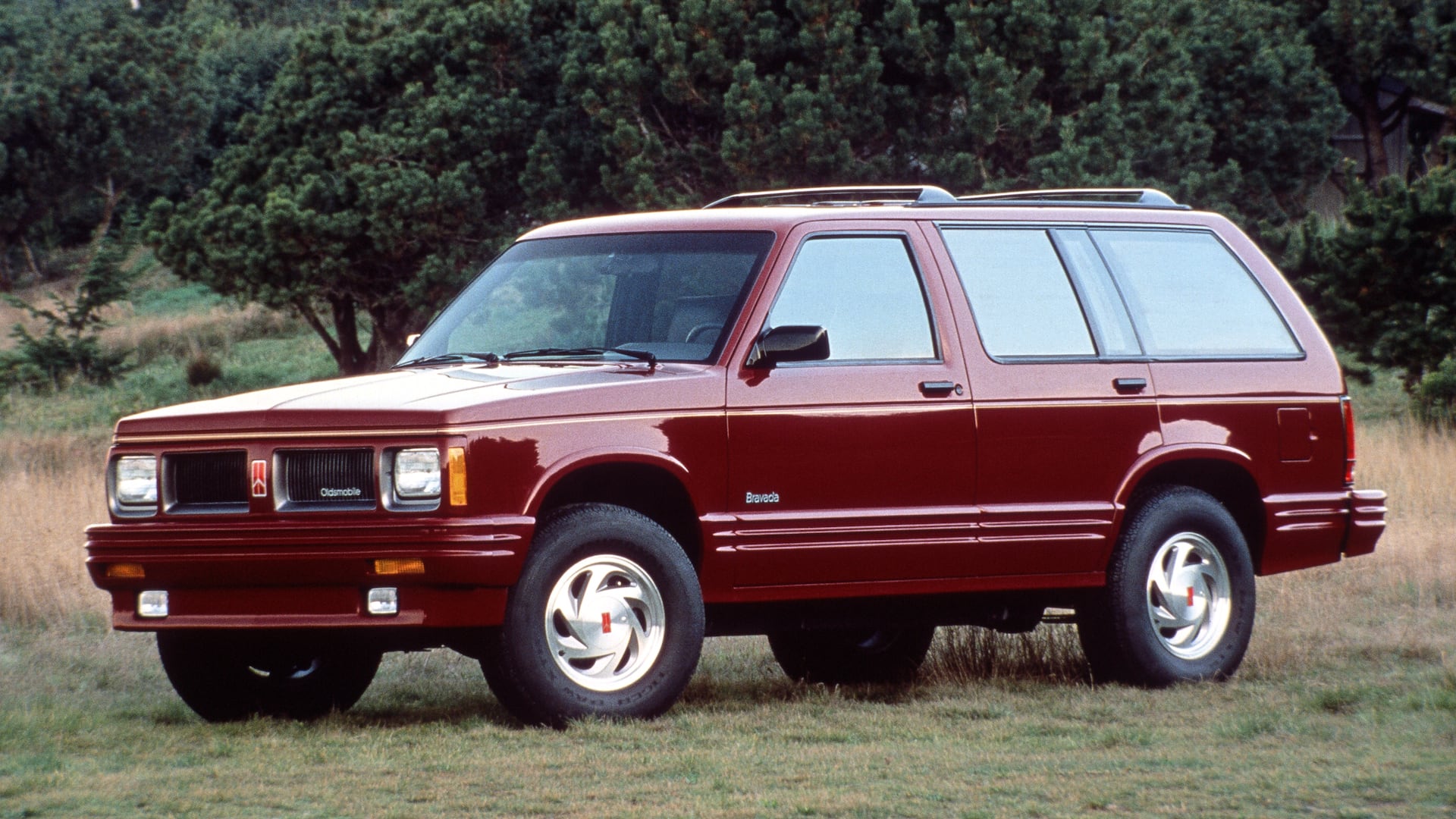
1994 Range Rover P38A
© Jaguar Land RoverWith the SUV market growing at pace, 1994 saw Land Rover finally replace the 25-year-old original Range Rover with an all-new model. The basics of body-on-frame construction, and a V-8 engine remained, but with a greater emphasis on comfort and luxury.
Launched under BMW’s ownership of Land Rover, pressure was placed on making the Range Rover even more upmarket. The Autobiography programme saw bespoke leather and wood interior combinations, along with special paint choices, on offer.
Limited Editions and greater personalization set the scene for the modern luxury SUV market, proving that customers are happy to pay more for an exclusive product.
-
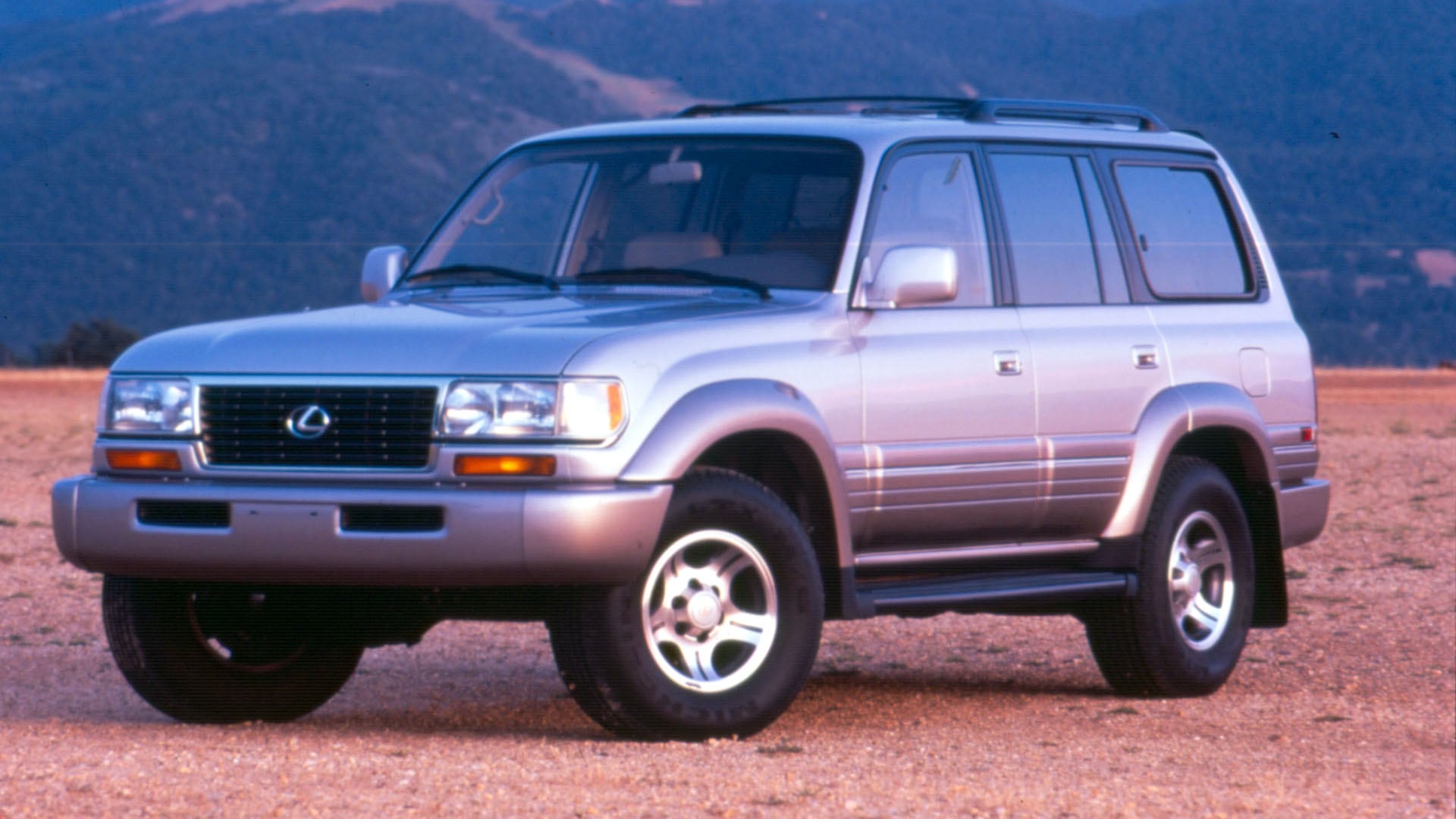
1996 Lexus LX 450
© LexusWith the Lexus brand established in the USA by 1996, Toyota’s luxury arm also looked to get involved in the world of SUVs. A trade war between Japan and the United States threatened to see imported luxury cars hit with tariffs, but would leave SUVs exempt. Given that the Toyota Land Cruiser had established itself as a dependable 4×4, it formed the basis of the first Lexus LX 450.
Exterior changes were little more than different badging, but inside the LX 450 had three rows of leather-clad seats and greater sound-deadening material. A 215 horsepower 4.5-liter V-8 was the only engine option, combined with a four-speed automatic transmission.
Like the Range Rover, the LX 450 proved that buyers were willing to pay more for a premium-badged SUV product.
-
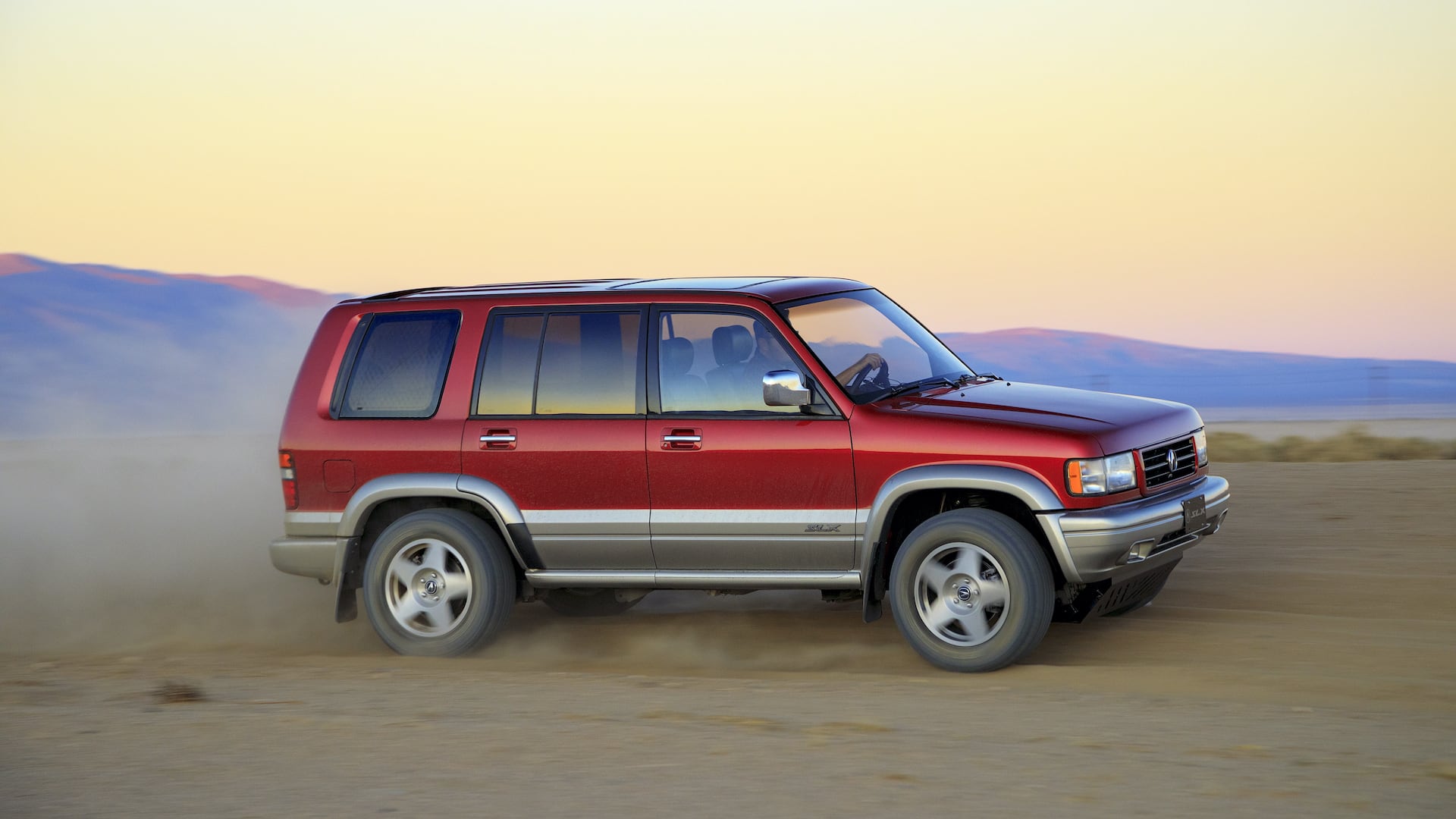
1996 Acura SLX
© AcuraAcura followed the same route as Lexus, offering a rebadged version of the Isuzu Trooper SUV as the SLX for the 1996 model year. Only sold in North America, the SLX initially came with a 3.2-liter six-cylinder engine and an upgraded interior.
Sales were hampered by reports that the Trooper had performed badly in rollover testing by Consumer Reports. Although some of the claims made were later judged as unfounded, the damage to the reputation of the Trooper and SLX was already done.
Styling updates, and a larger 3.5-liter engine, failed to ignite customer interest. Acura launched its own mid-size MDX as a replacement in 2001.
-
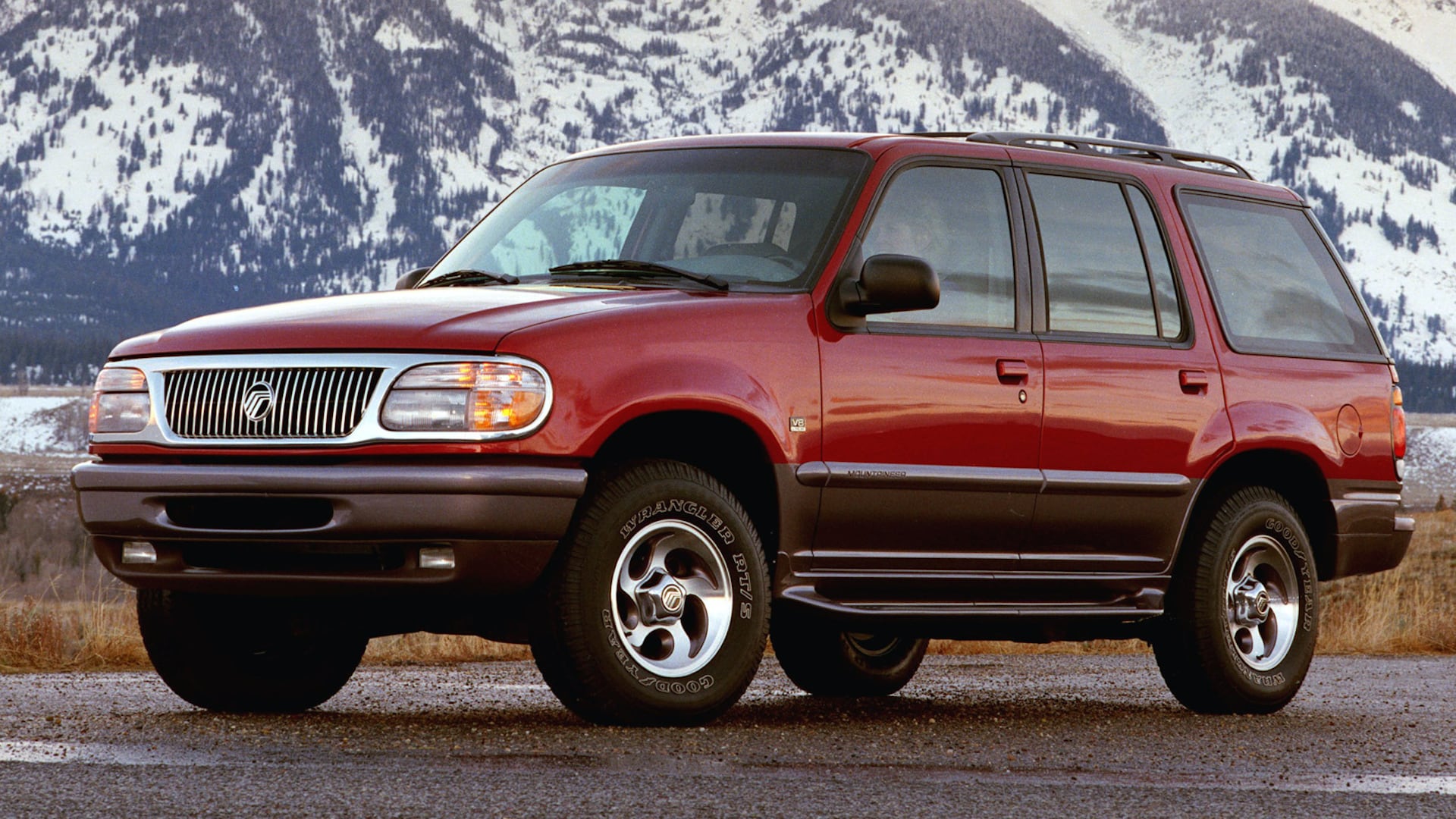
1997 Mercury Mountaineer
© MercuryFord had previously experimented with upmarket trim levels on the Explorer, but the 1997 mid-size Mountaineer marked the first bespoke luxury SUV model. Visually and mechanically similar to the Explorer, a chrome front grille and contrasting lower body colors tried to distinguish it from the Ford.
A larger price tag also tried to emphasize the differences with the regular Ford, with Mercury pushing buyers to load up on optional extras. More than 26,000 Mountaineers found buyers in the first year of production, increasing to 45,000 the next, demonstrating there was a market for fancy mid-size SUVs.
-
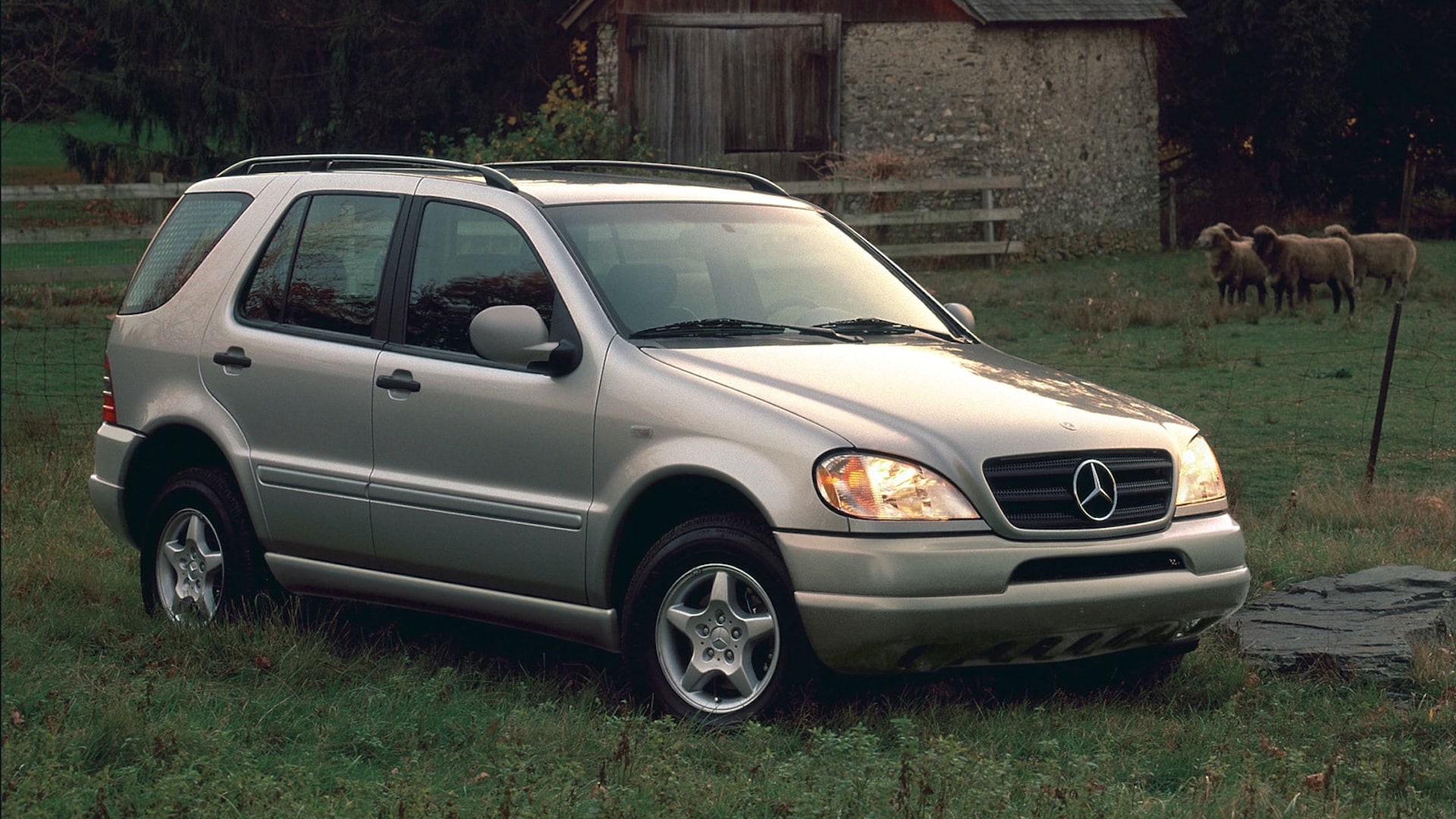
1998 Mercedes-Benz ML-Class
© Mercedes-BenzPlans for a road-focussed Mercedes-Benz SUV had been around since the early 1990s, with the German company seeking a base in the United States to produce it. A site in Vance, Alabama was chosen, with construction of the new factory beginning in 1996.
Production models of the new ML-Class left the factory in February 1997, offering a range of engines connected to a permanent four-wheel drive system. A feature in The Lost World: Jurassic Park movie helped promote the new SUV internationally.
Further recognition came in 1998, when the ML-Class was awarded the prize of North American Truck of the Year. However, the car received criticism for interior quality, with Mercedes-Benz having to invest heavily to improve the premium feel.
-
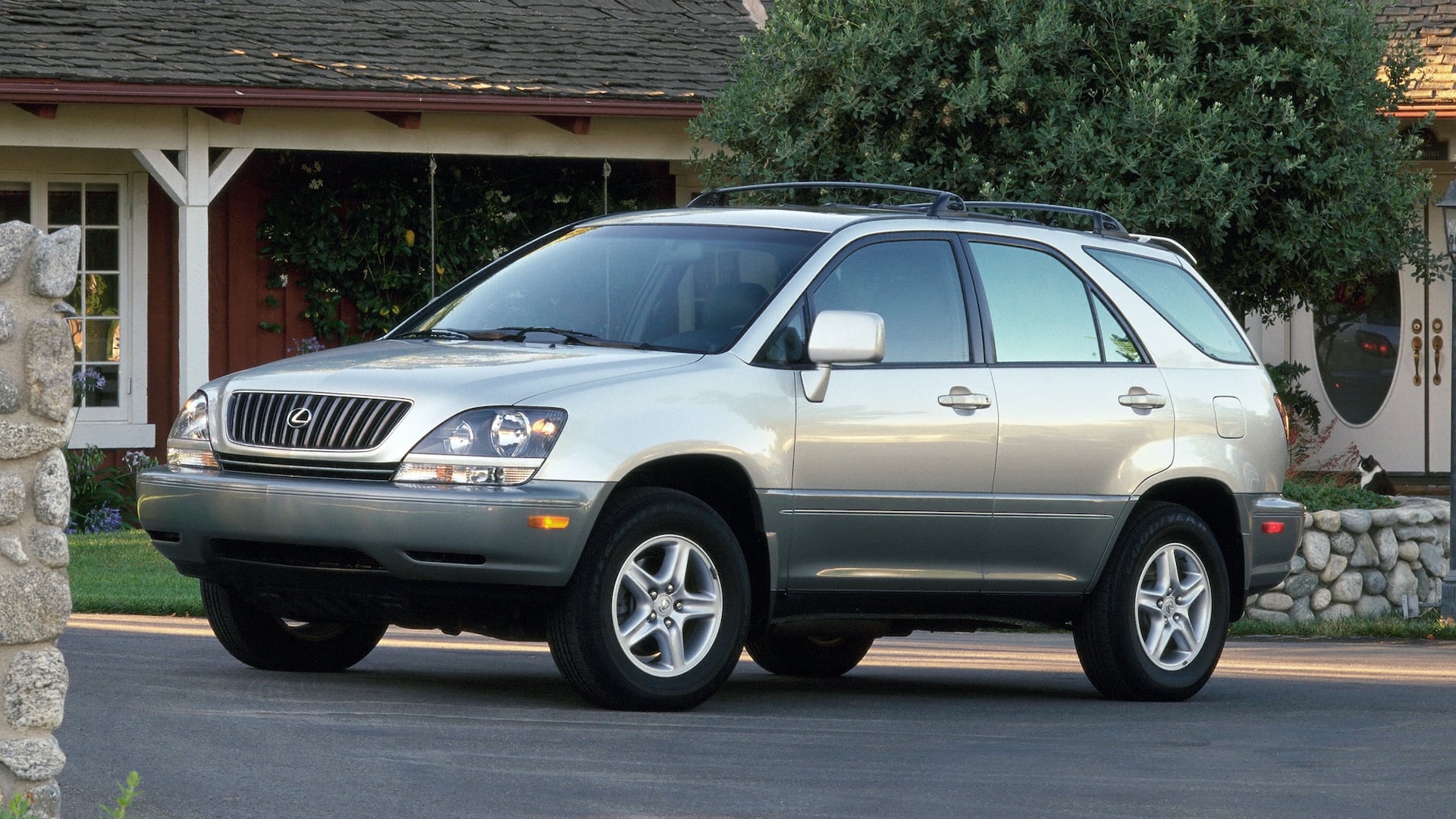
1998 Lexus RX 300
© LexusAlthough full-size luxury SUVs had been the mainstay of the North American marketplace, the growing trend for mid-size models continued in the late 1990s. Lexus launched the first-generation RX, based on the Toyota Harrier crossover, in 1998.
The RX rapidly became one of the best-selling Lexus models, and also one of the most popular SUVs in North America. Unibody construction, crossover styling, and a focus on comfort and safety were seen as more important than outright off-road ability.
-
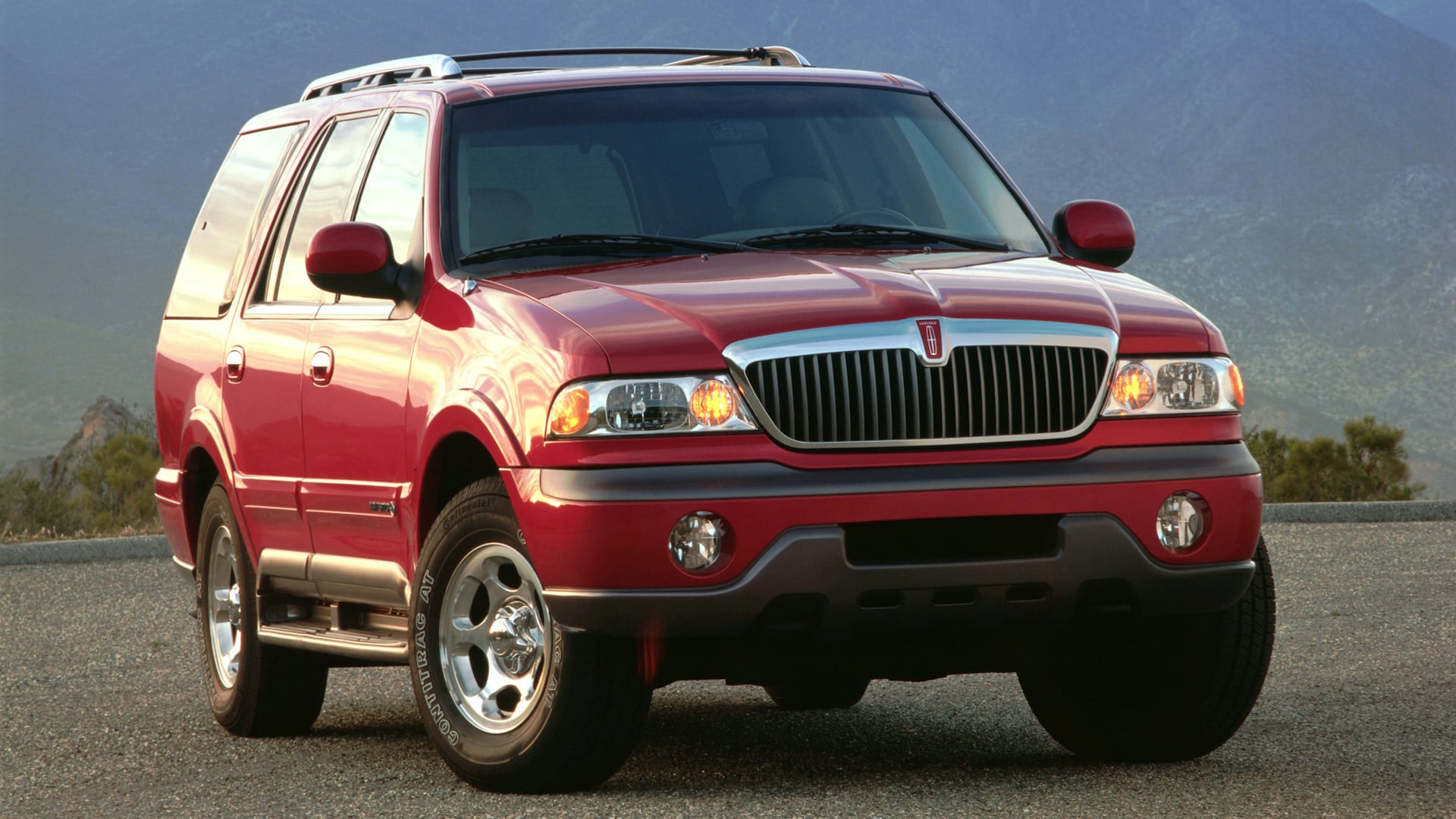
1998 Lincoln Navigator
© LincolnAutomakers had realized the potential for profits on full-size luxury SUVs, and Ford turned to the large Expedition as the next model to get a premium makeover. The Navigator shared the 5.4-liter V-8 engine and automatic transmission with the Expedition, along with most of the bodywork behind the front windshield. Self-levelling air suspension was a standard feature designed to make the new Navigator standout from the Ford, though.
Like with the earlier Mercury Mountaineer, Lincoln fitted the Navigator with features typically only optional on the Expedition. These included power seats, extra wood interior trim, and keyless entry. Climate control dials for those in the rear seats, and power-adjustable pedals, were unique to the Navigator.
-
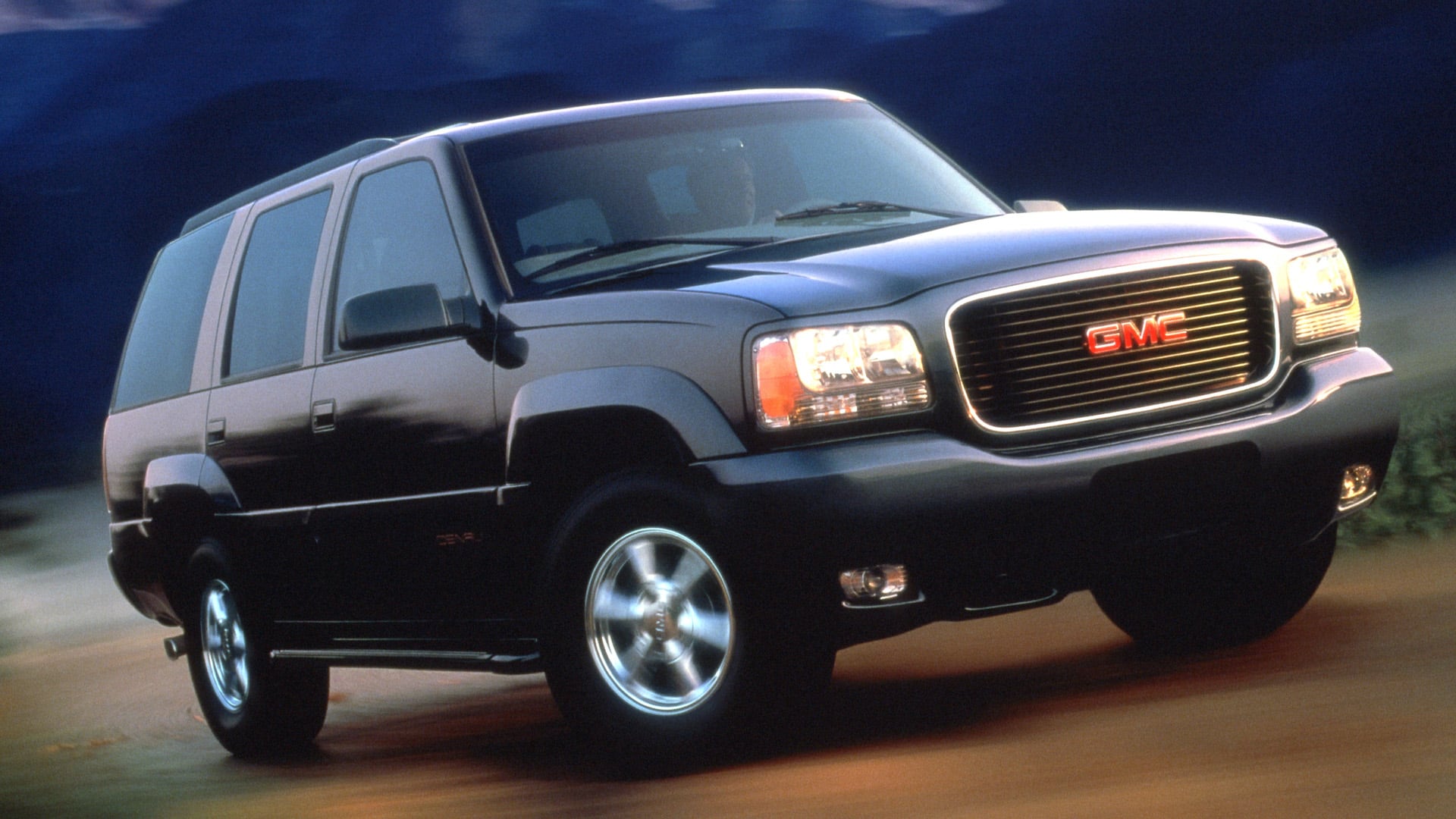
1999 GMC Yukon Denali
© GMCWith a name taken from the highest mountain in North America, the Denali line of GMC products began with high expectations. The 1999 Yukon Denali would be the first model in a range that would become hugely profitable for General Motors, proving the appeal of the premium badge.
The first-generation Yukon Denali featured different exterior panels, plus unique 16-inch wheels, compared to the normal Yukon SUV. Leather upholstery, woodgrain trim, and a Bose sound system were also fitted inside. Push-button four-wheel drive, and a 5.7-liter V-8 engine, were standard equipment.
-
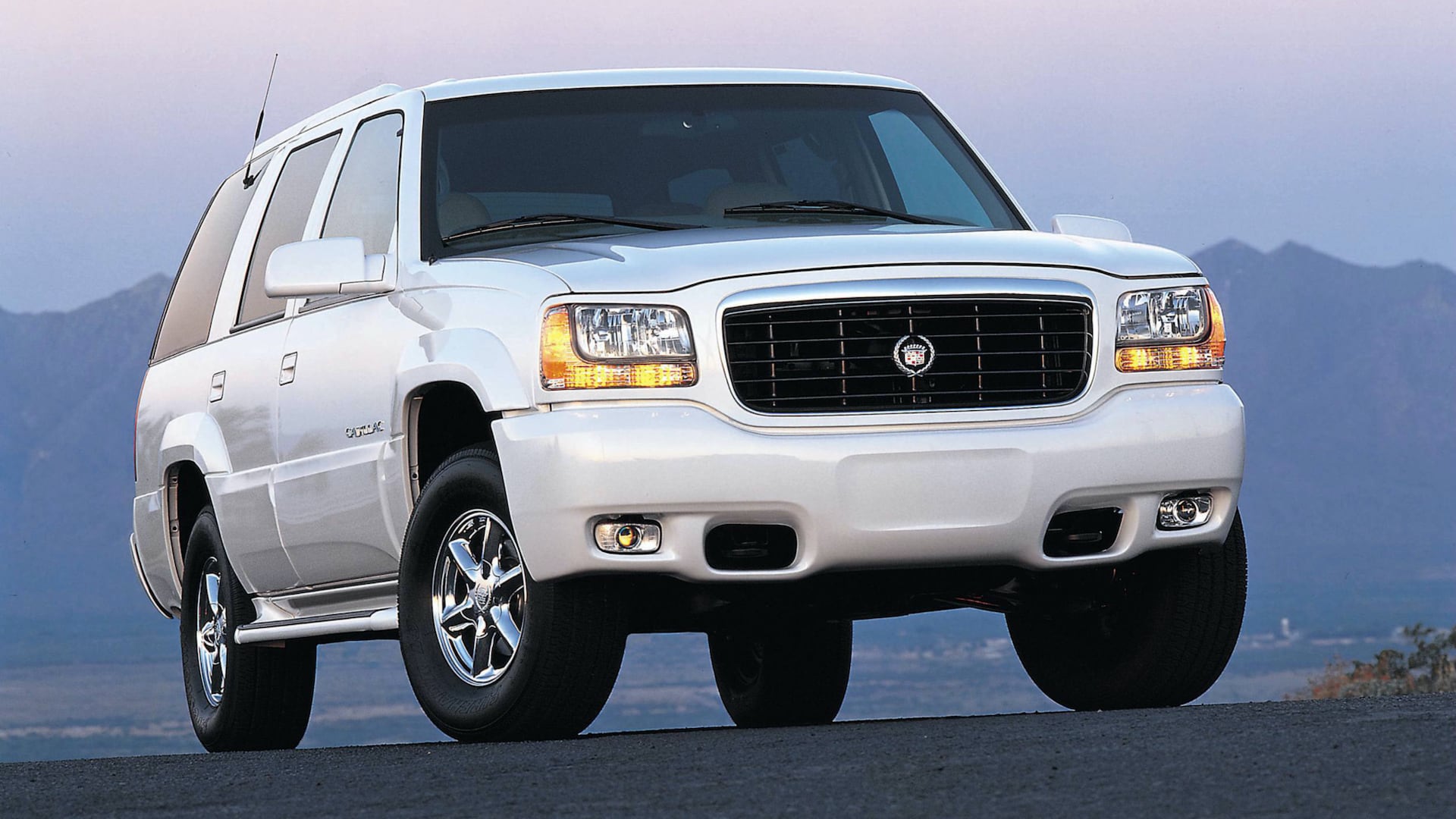
1999 Cadillac Escalade
© CadillacLook familiar? The original Escalade shared much with the Yukon Denali, having been rushed into production to battle the Lincoln Navigator. Visual changes were limited to different exterior badges and wheel center caps, plus a unique front grille design.
Mechanical components were shared with the Yukon Denali as well, meaning the Escalade justified a higher list price on the strength of its Cadillac badge. Standard equipment included tri-zone climate control, OnStar telematics, keyless entry, automatic headlights, and leather-trimmed seats.
Sales started slowly, but have risen to make the Escalade an important part of the luxury SUV market in North America.
-
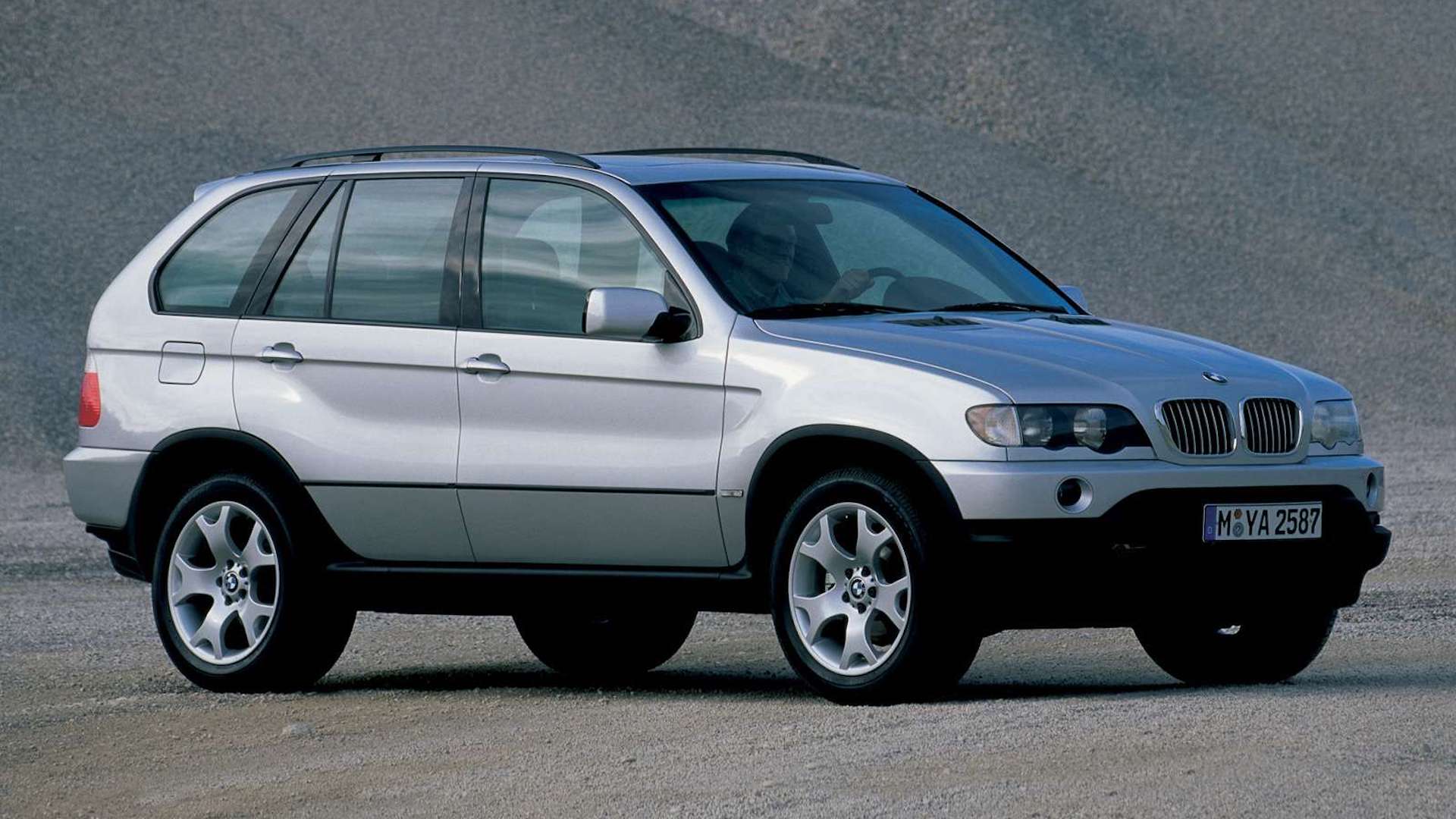
2000 BMW X5
© BMWDeveloped whilst BMW still held ownership of Land Rover, the brand had investigated building an SUV model throughout much of the 1990s. A combination of technology from the E39 5 Series sedan and Range Rover were used to create BMW’s first SUV, with production taking place in Greer, South Carolina.
Fitted with all-wheel drive as standard, BMW was keen to promote the X5 as being designed primarily for use on the road. High-performance models would follow, with a 340 horsepower 4.6is V-8 version being launched in 2001.
-
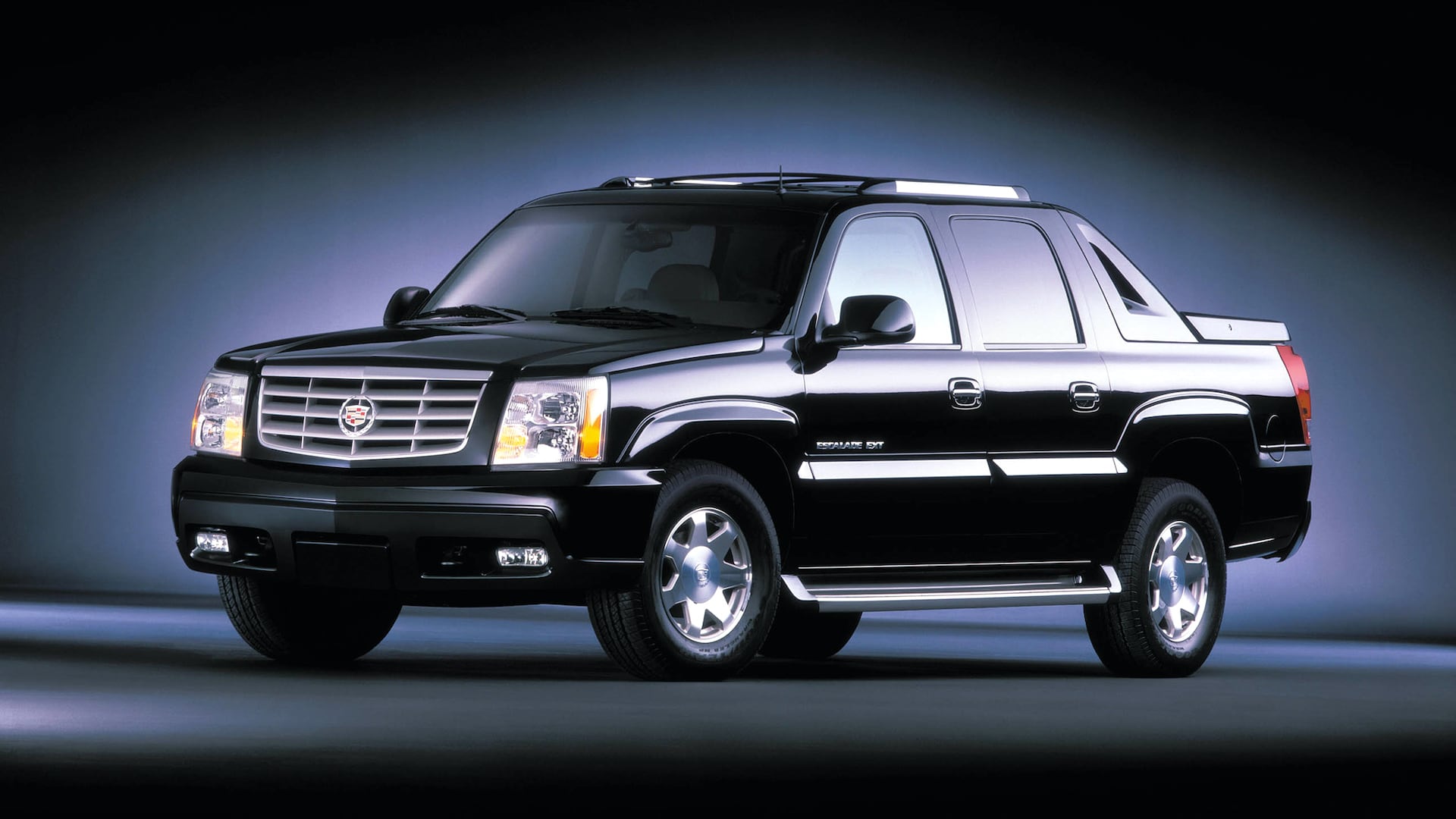
2002 Cadillac Escalade EXT
© CadillacAn offshoot of the luxury SUV trend, upmarket pickup trucks gained their own slice of the market in the early 2000s. The short-lived 2001 Lincoln Blackwood kickstarted the trend, with Cadillac pushing the Escalade EXT into production as a rival.
Introduced in 2002 alongside the Chevrolet Avalanche, the Escalade EXT featured seating for five and a load bed that could be extended into the cab. Whilst sales of the EXT began strongly, these waned following the introduction of a second-generation in 2007. GM pulled the plug on both the EXT and Avalanche in 2013.
-
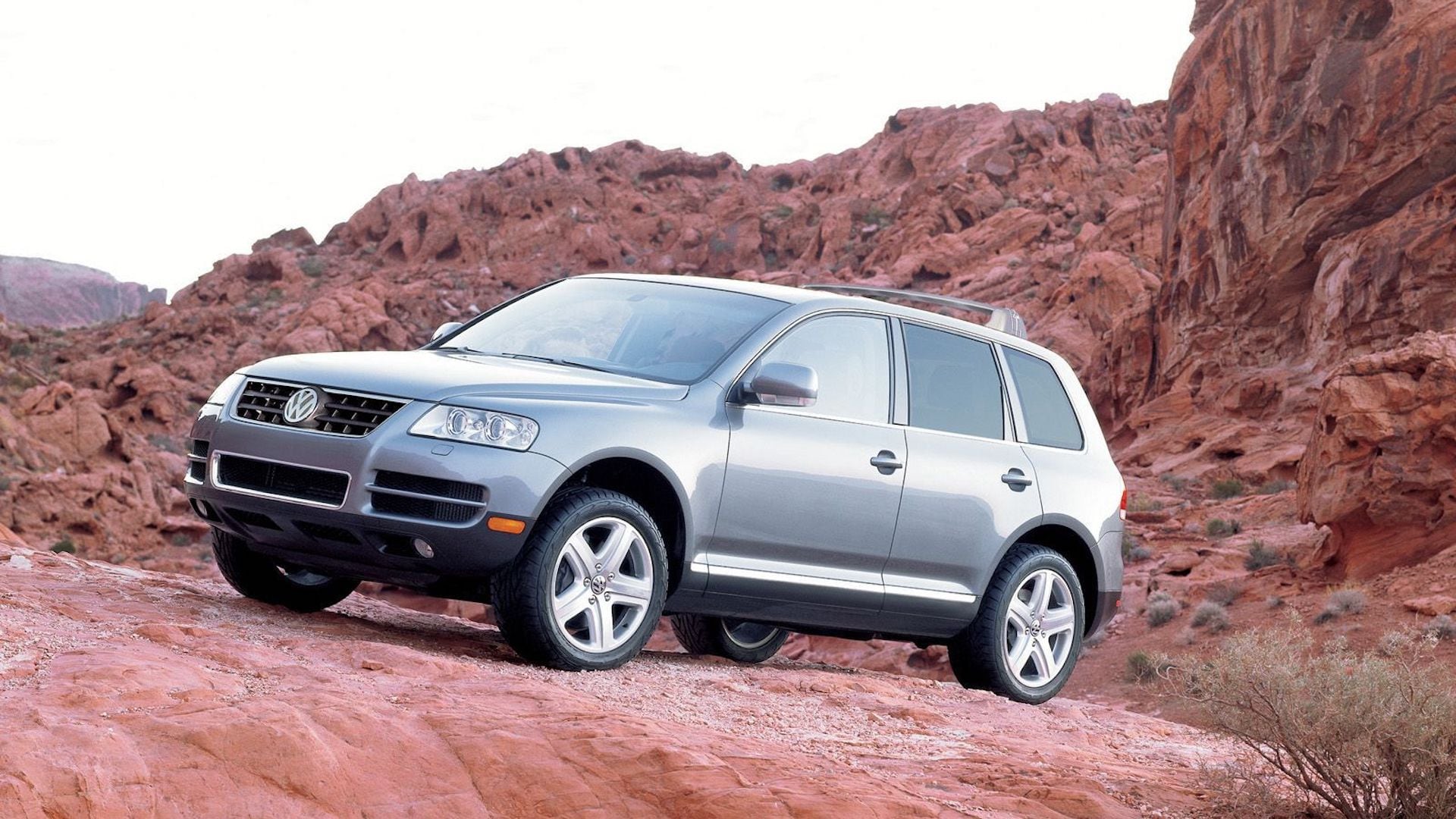
2002 Volkswagen Touareg
© VolkswagenVolkswagen had seen considerable worldwide expansion in the late 1990s, with the brand looking to push itself upmarket. Along with the Phaeton sedan, the Touareg was designed to compete with German premium competitors like BMW and Mercedes-Benz.
For North America, V-6 and V-8 engines were included for the launch models in 2002. However, Volkswagen would also offer a V-10 diesel model, with an impressive 309 horsepower and 553 lb-ft of torque. The V-10 Touareg would find fame by pulling a Boeing 747 to set a new world record.
-
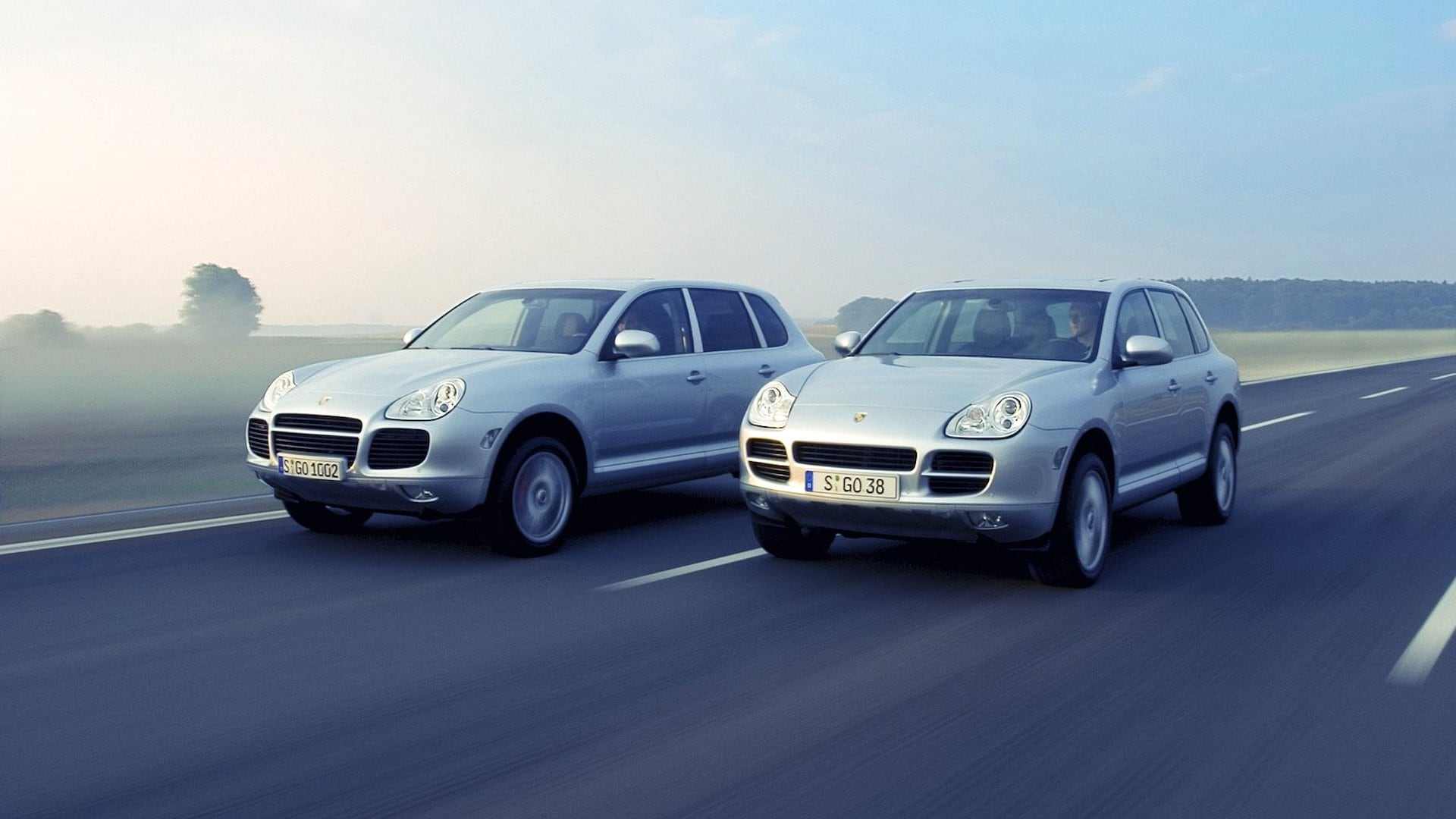
2003 Porsche Cayenne
© PorscheDeveloped on the same platform as the Touareg, Porsche upset many brand purists with the launch of its first SUV in 2003. Whilst the looks may have proved to be challenging, the performance on offer from the 444 horsepower Turbo model proved this was very much still a Porsche at heart.
The Cayenne has proved to be a major sales success for Porsche, helping the company to stay in business and become hugely profitable. It paved the way for other sports car manufacturers to take the plunge into the world of the SUV.
-
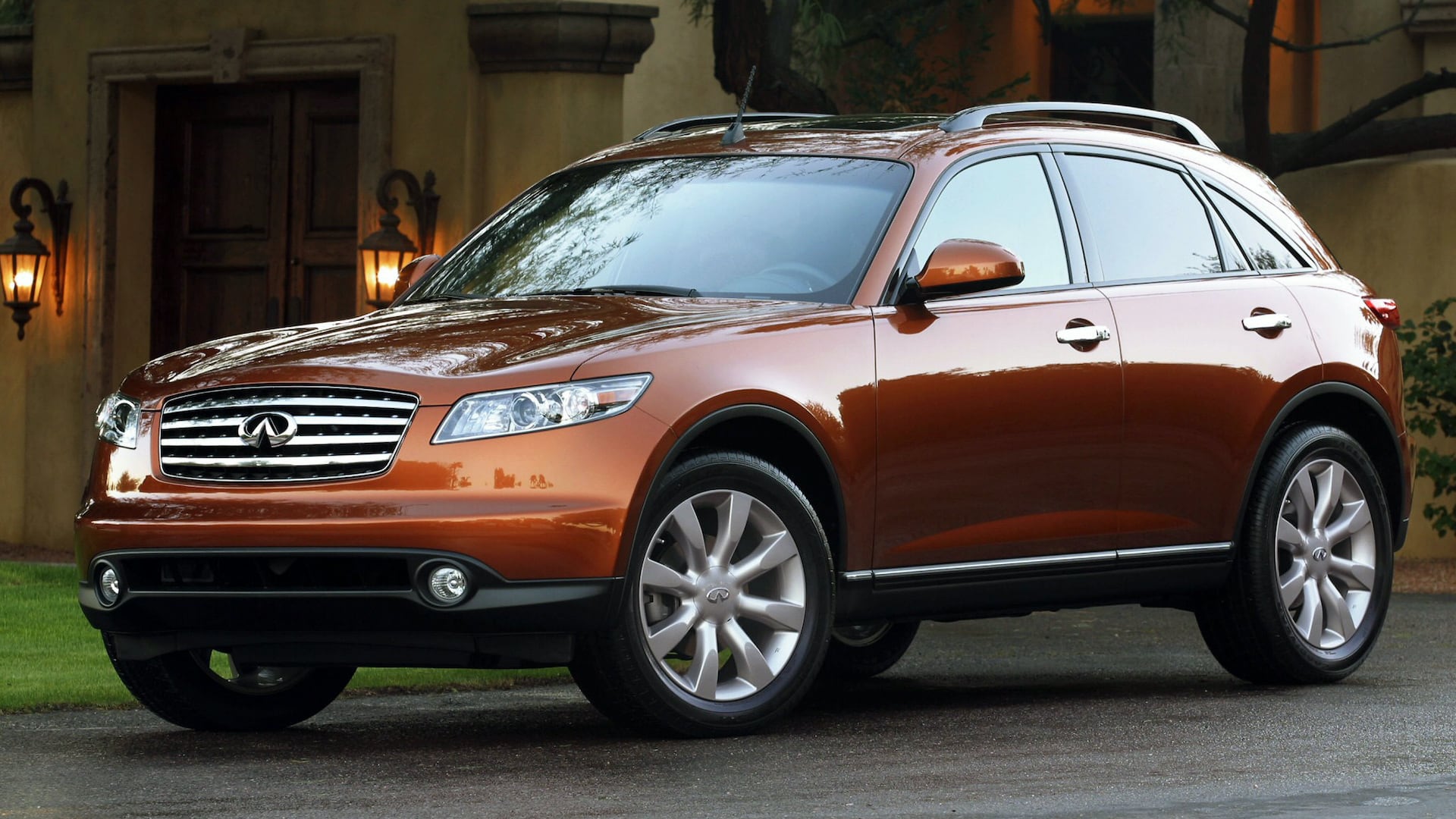
2003 Infiniti FX
© InfinitiInfiniti had previously experimented with the luxury SUV market, having launched the QX4 for the 1997 model year. Little more than a rebadged Nissan Terrano, the QX4 was replaced in 2003 following the introduction of the mid-size Infiniti FX.
Featuring dramatic styling and a choice of V-6 and V-8 engines, the FX caused a stir in the premium SUV world. The road-orientated dynamics of the FX could be found in the fact that all-wheel drive was merely optional. Power seats, 20-inch wheels, and advanced safety technology were all standard, however.
-
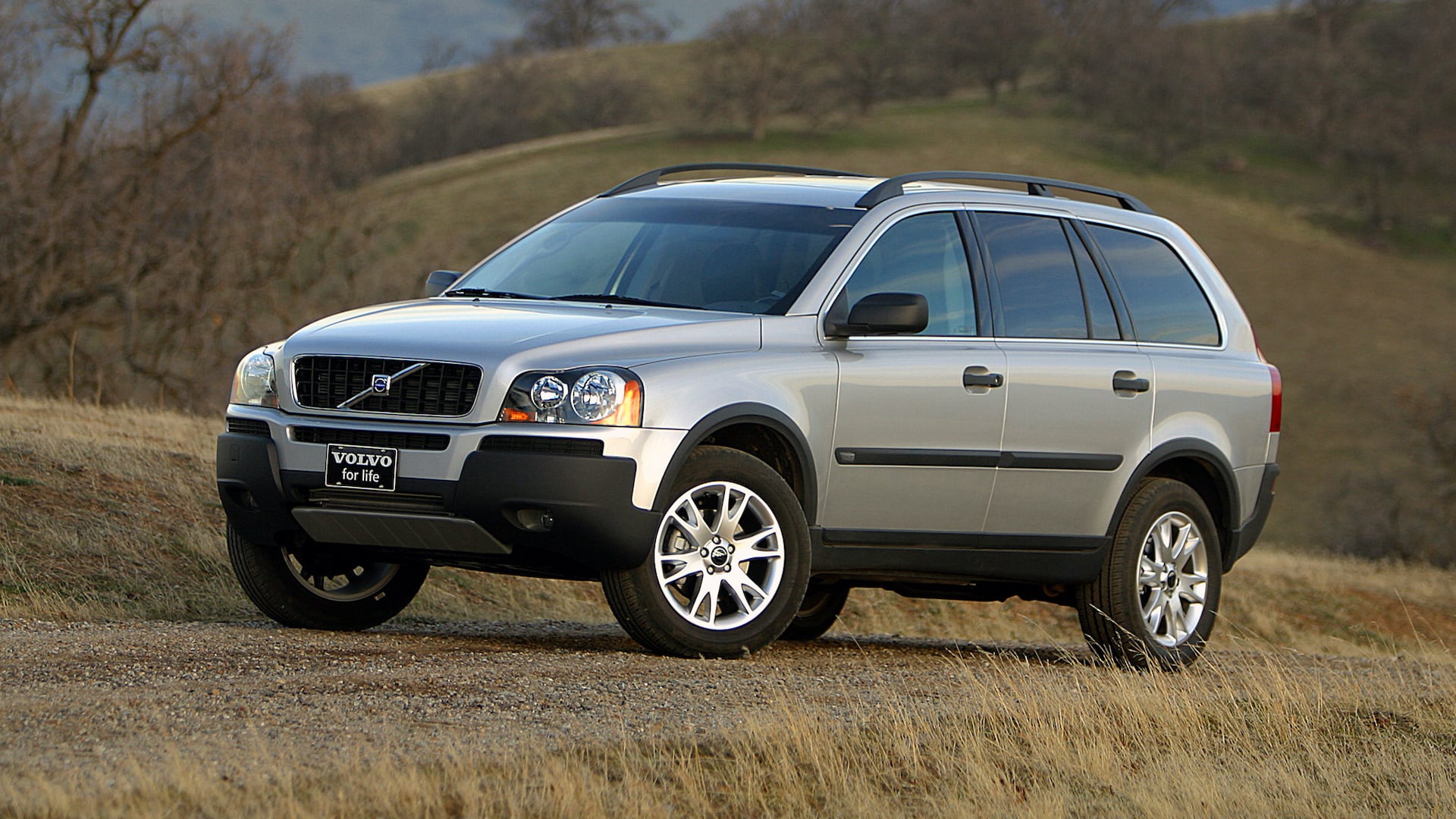
2003 Volvo XC90
© VolvoBeing launched at the 2002 Detroit Auto Show served as a reminder for the market Volvo wanted to target with its first true SUV. Volvo had previously offered high-riding versions of the V70 station wagon, but the XC90 would mark a new departure for the Swedish brand.
The XC90 found fans almost instantly, collecting the North American Truck of the Year award in 2003. More than 35,000 Americans would buy one in its first full year on sale, with a V-8 engine boosting demand further in 2005.
-
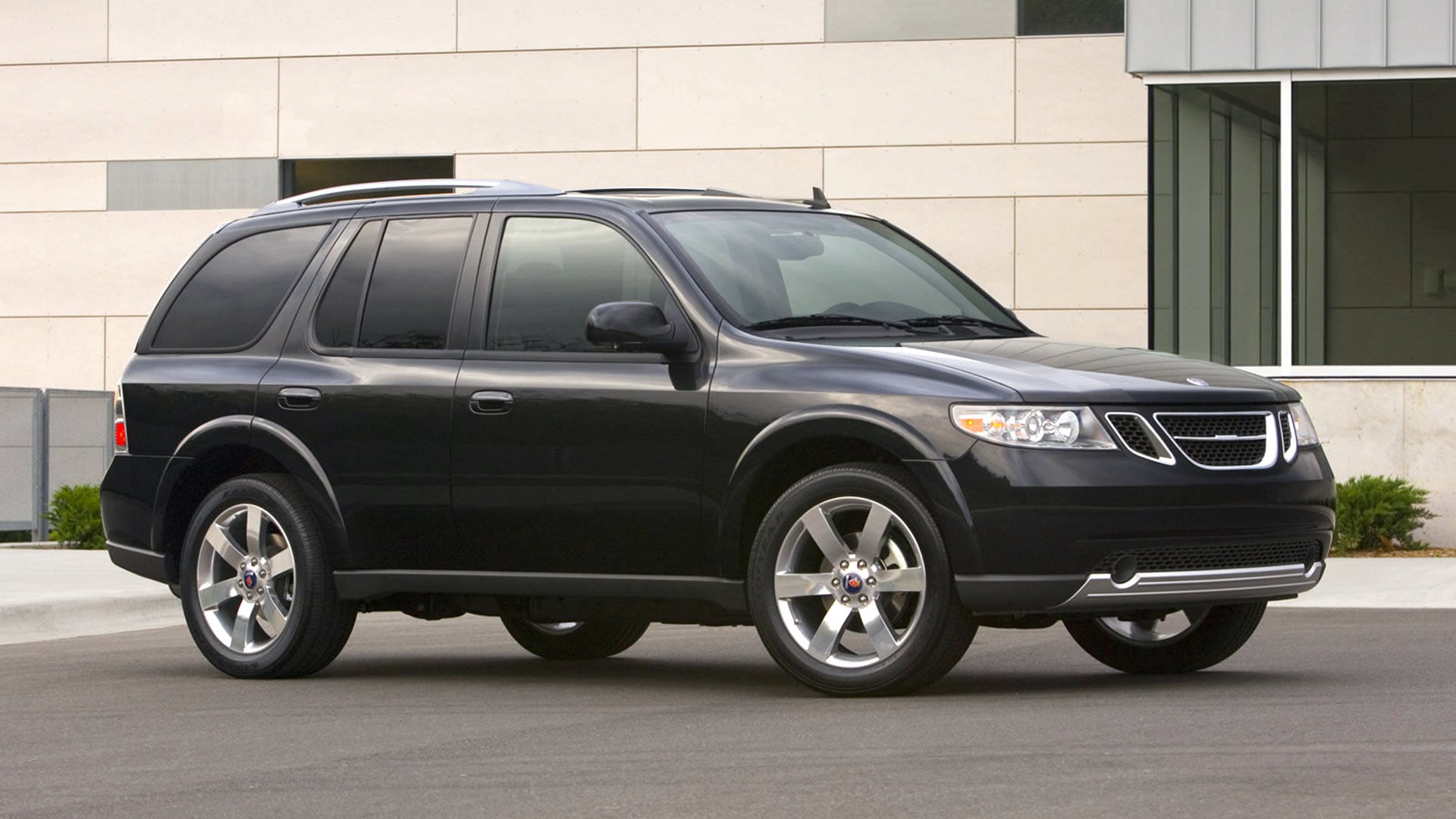
2005 Saab 9-7X
© SaabGeneral Motors must have sensed that Swedish-badged SUVs were the thing to have. 2005 saw the release of the Saab 9-7X, acting as little more than an Oldsmobile Bravada with a Saab nose grafted onto it. As the second-most expensive SUV sold by General Motors, the 9-7X was intended to compete with the Volvo XC90 and premium German models.
A lack of third-row seating, an ancient four-speed automatic transmission, and the feeling that this was still very much a GM product underneath did not help the 9-7X. GM’s brand mismanagement ultimately plunged Saab into administration in 2009.
-
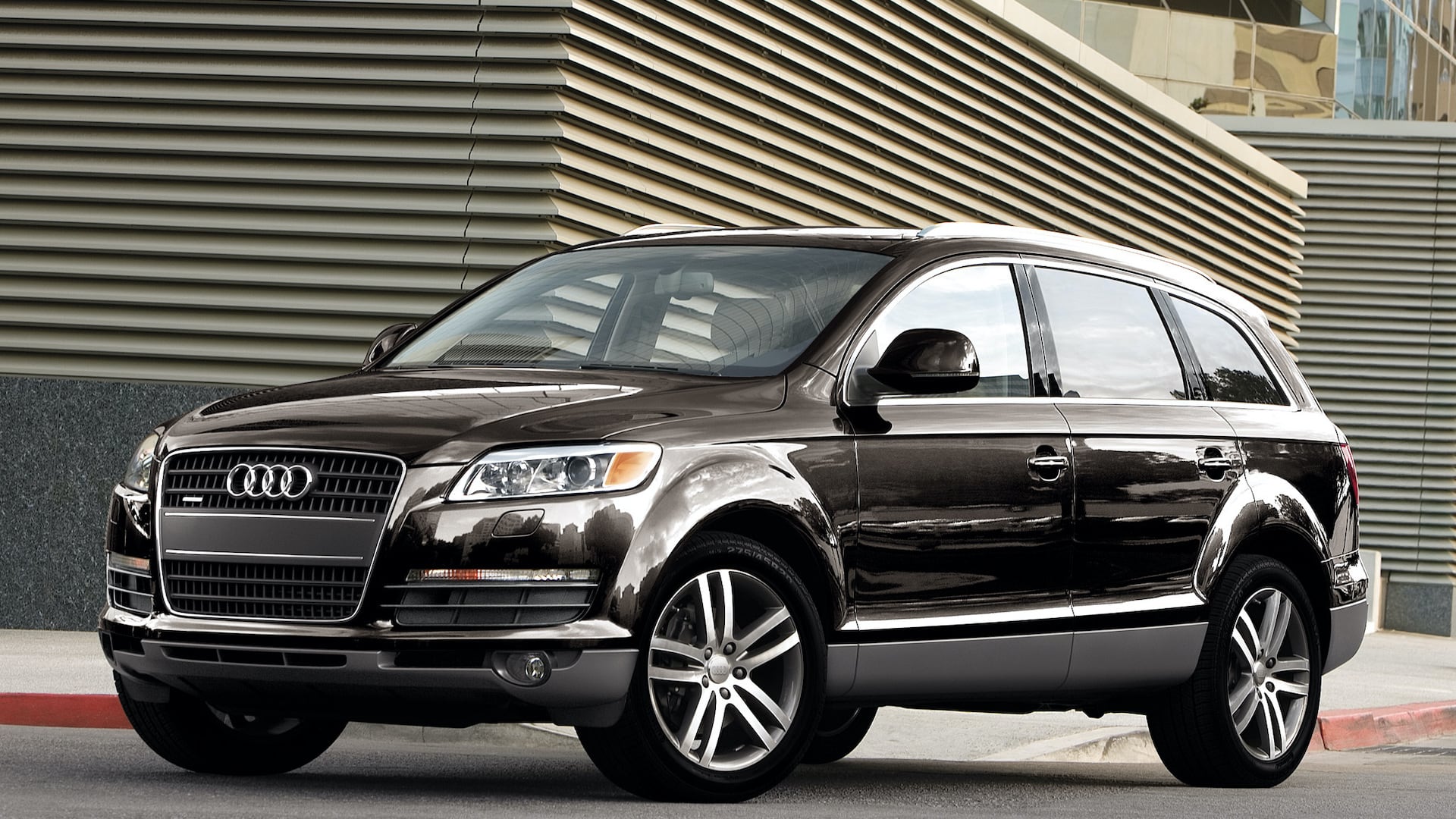
2007 Audi Q7
© AudiCuriously, it took Audi until the 2007 model year to release a dedicated SUV offering in North America. The Allroad Quattro, based on the A6 Avant station wagon, had been the only off-road biased model sold until the Q7 appeared on the scene.
Sharing a platform with the Porsche Cayenne and Volkswagen Touareg, the first-generation Q7 came with air suspension, a locking center differential, and Audi’s trademark Quattro all-wheel drive system.
-
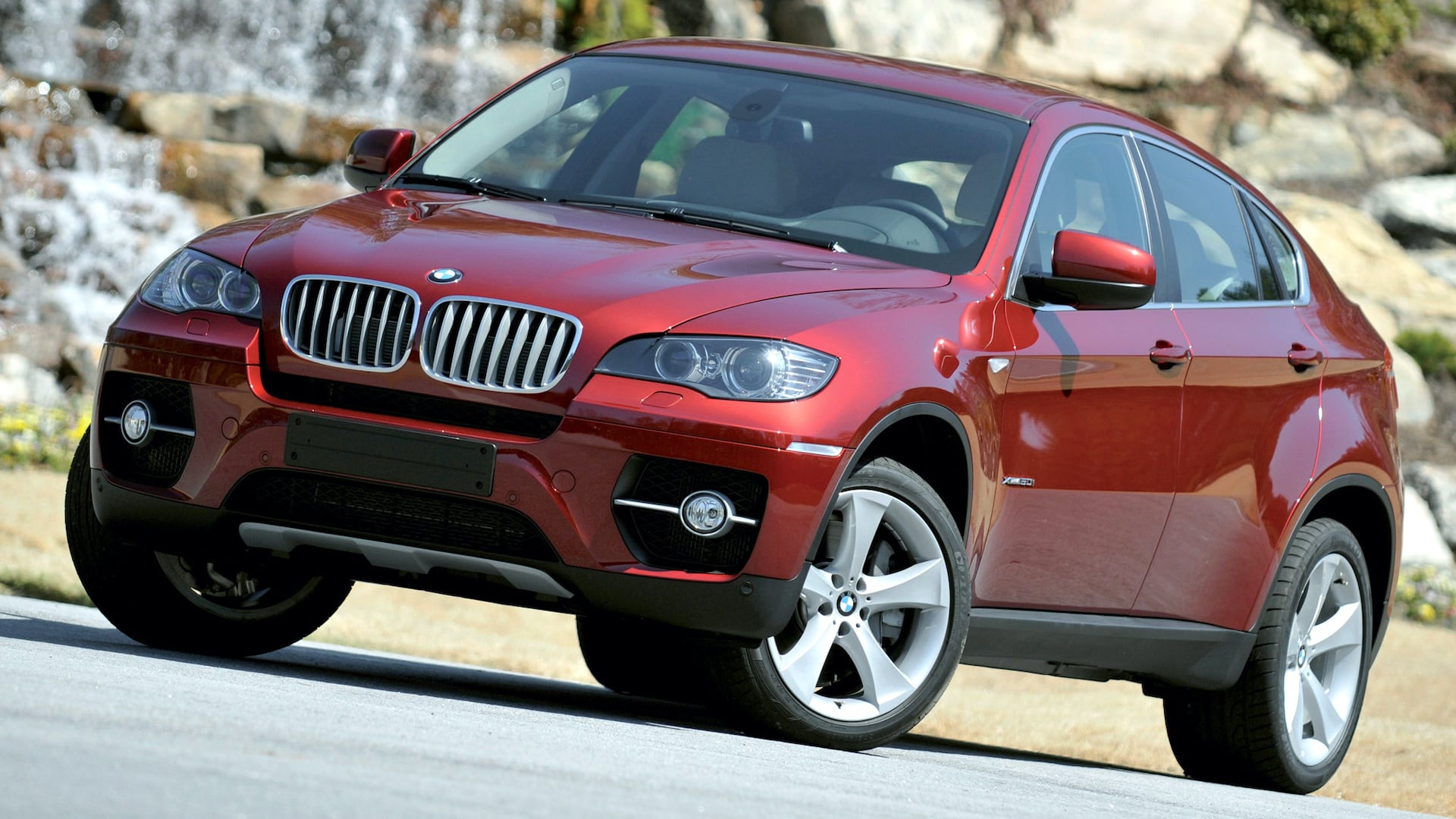
2008 BMW X6
© BMWDemonstrating that there is always room for development in the luxury SUV market, BMW pushed the envelope of taste with the first-generation X6. Marketed by the company as a ‘Sports Activity Coupe’, the X6 combines a regular SUV stance with the sloping roofline of a coupe.
The X6 is now into a third generation, and has spawned several imitators. Audi, Mercedes-Benz, Porsche, and Volkswagen all now offer their own coupe-like SUVs. It means we can expect to see this niche continue for the foreseeable future.
-
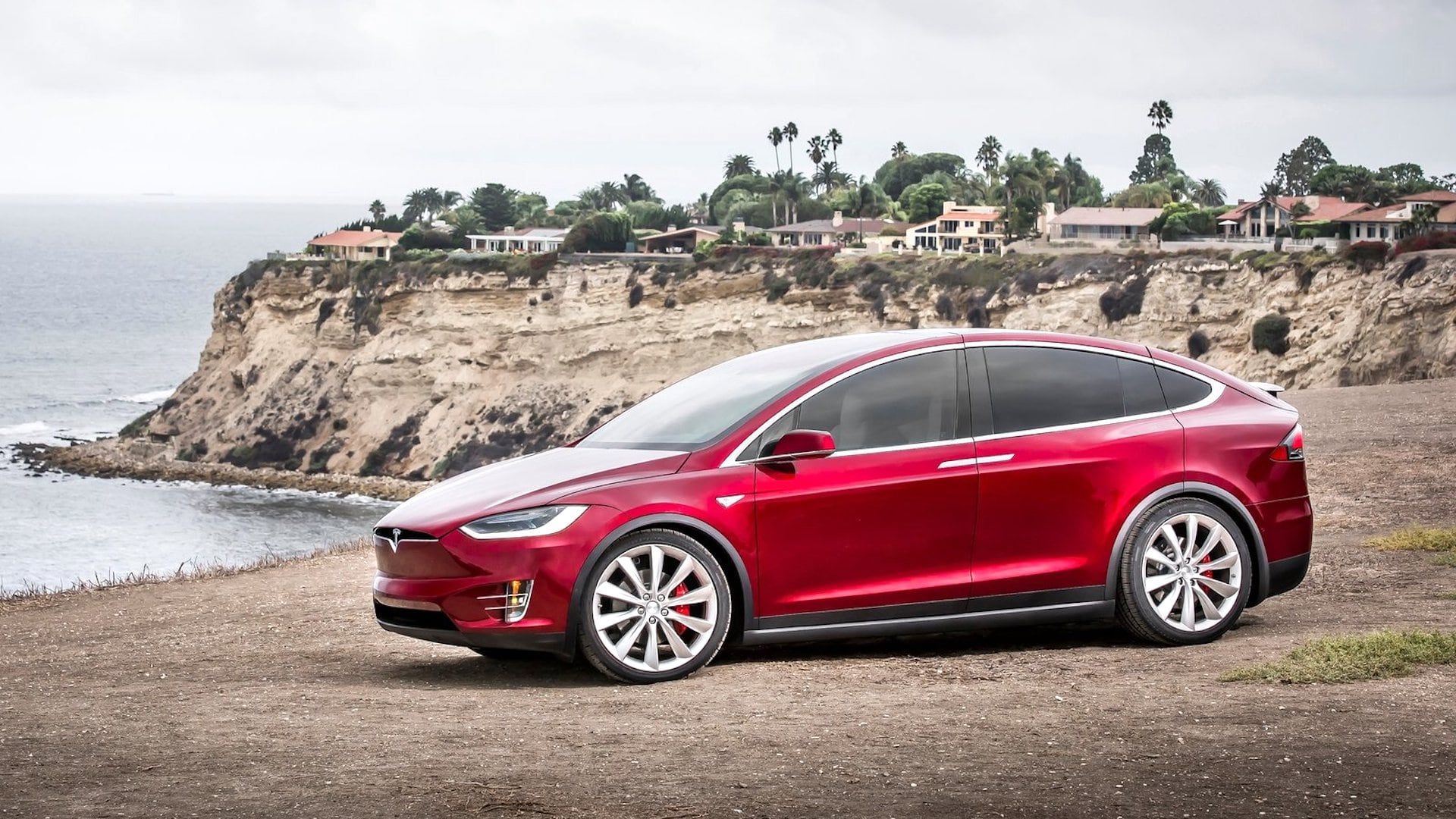
2015 Tesla Model X
© TeslaAnother trend-setting vehicle, the Tesla Model X brought the idea of a luxurious SUV being powered by batteries to the mainstream when launched. Developed from the Tesla Model S sedan, the Model X does have all-wheel drive as standard through the use of an individual electric motor for each axle.
Despite a premium price tag, the Model X passed the milestone of 100,000 units produced in September 2018. The push to electrification has seen Audi launch the e-tron SUV, with other premium manufacturers having their own all-electric luxury SUVs in development.
-
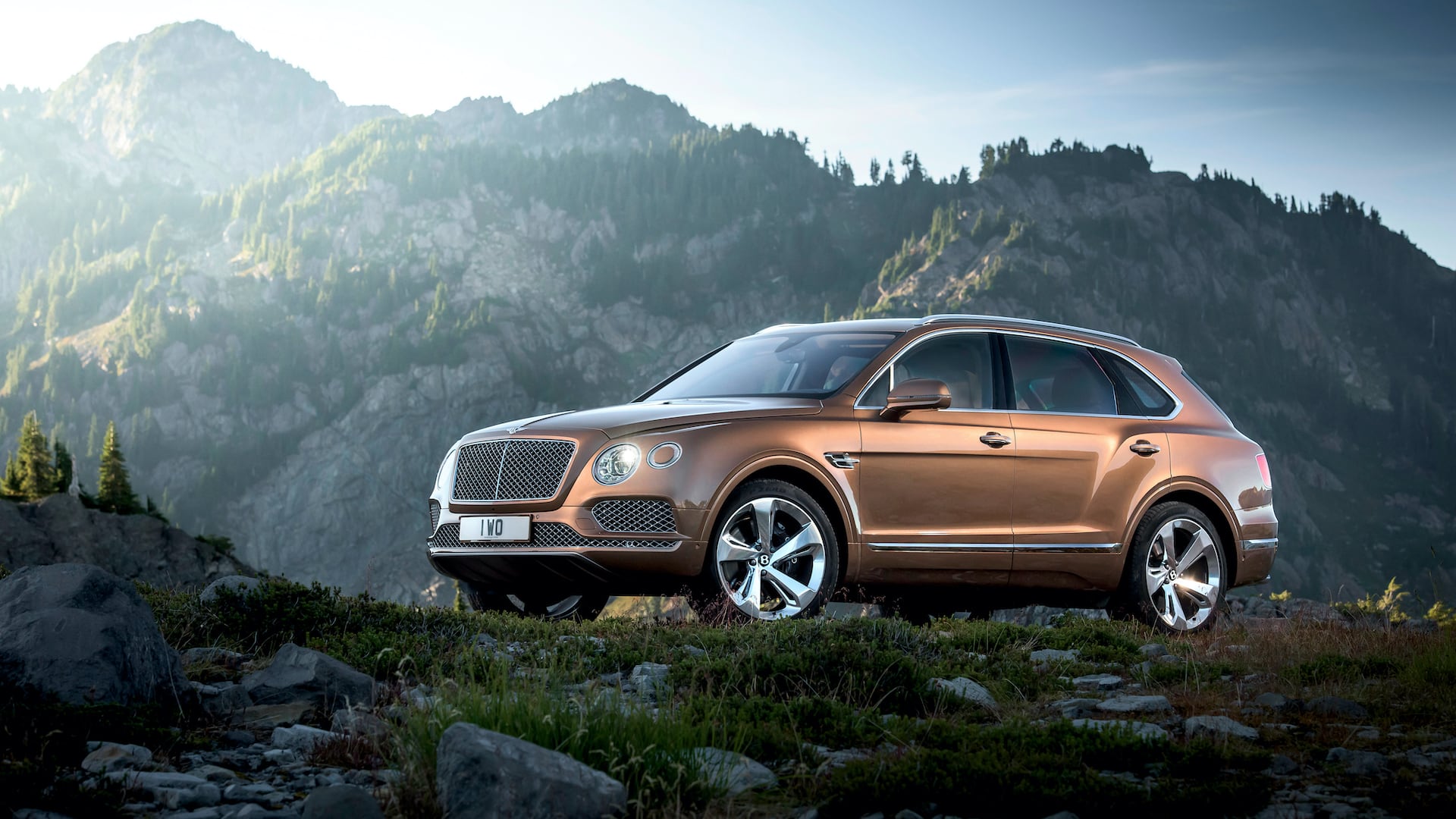
2016 Bentley Bentayga
© BentleyWith more marques pushing to be seen as premium brands, it makes standing out from the crowd harder. Thankfully, for those who still want to be seen driving the most luxurious SUV, Bentley launched the Bentayga for the 2016 model year.
Based on the platform used by the latest Porsche Cayenne, the Bentayga launched with all-wheel drive and an impressive twin-turbo W-12 engine with 600 horsepower. A top speed of 187 mph made it the fastest production SUV in the world when new.
Luxury was not forgotten, with the Bentayga buyers able to customize the interior with bespoke leather trim, and paint the exterior in unique colors. An optional Breitling Mulliner Tourbillon dashboard clock at $234,000 costs more than the actual Bentayga itself.
-
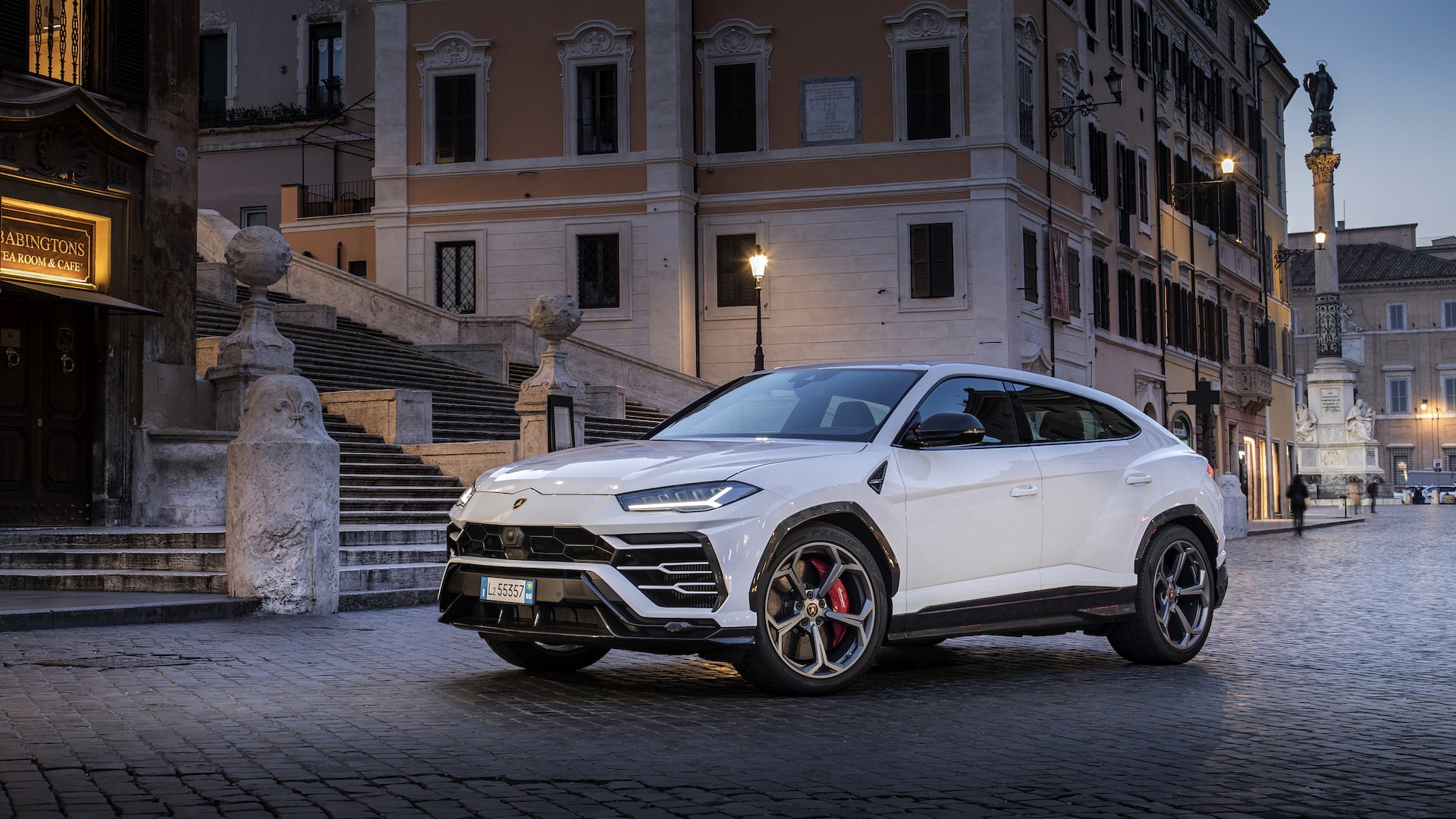
2018 Lamborghini Urus
© LamborghiniProving that no brand is safe from the lure of the premium SUV market, even Lamborghini succumbed to it in 2018. It became the first Lamborghini model to use a V-8 engine for some 30 years, being powered by a version of Audi’s twin-turbocharged 4.0-liter unit.
However, the Urus has an output of 641 horsepower, plus a body making extensive use of carbon fiber to save weight. Standard all-wheel drive, giant carbon-ceramic brakes, and air suspension allow it to perform like a normal Lamborghini.
-
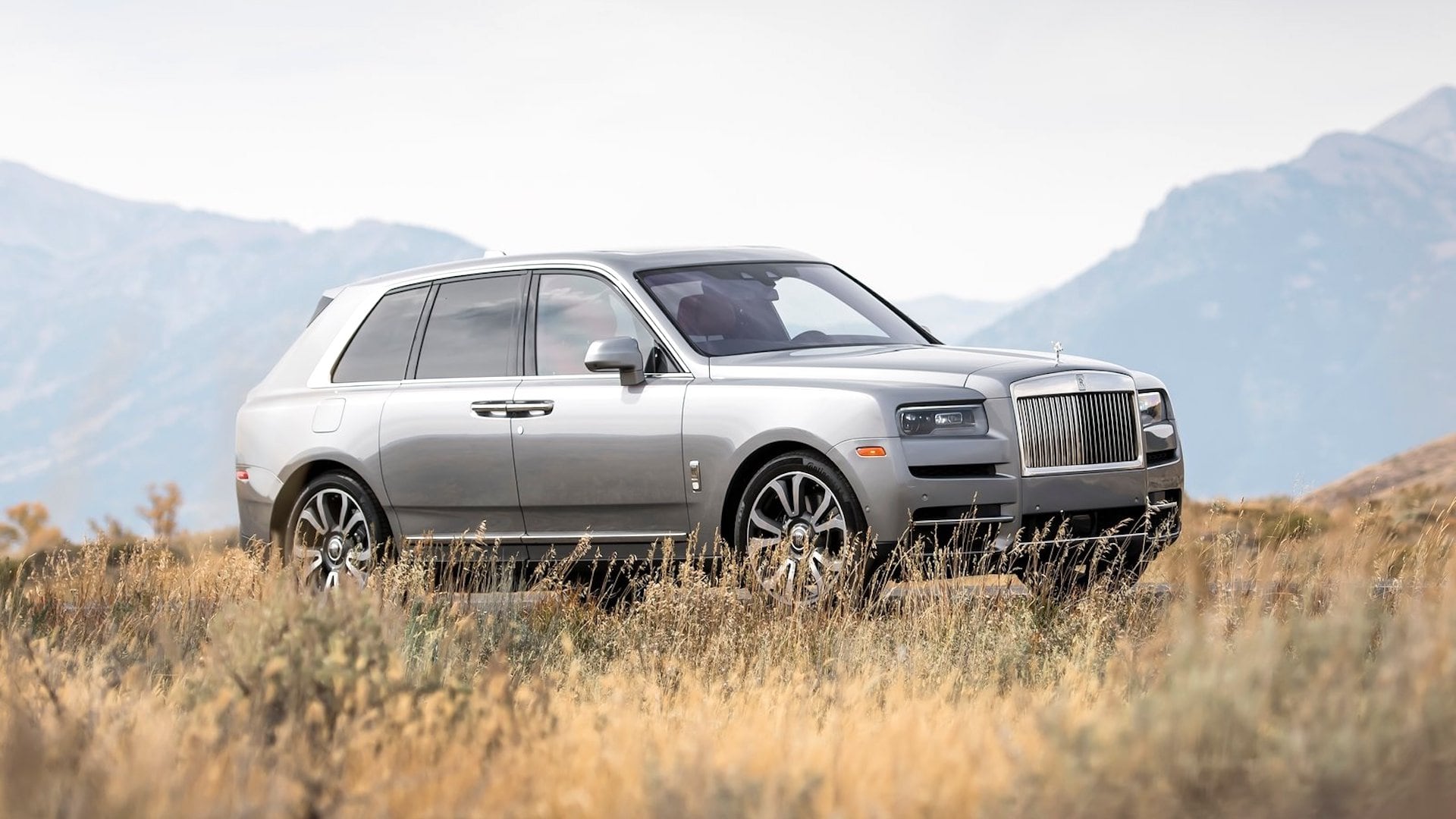
2019 Rolls-Royce Cullinan
© Rolls-Royce MotorsWith a starting price of more than $325,000, the Rolls-Royce Cullinan is as expensive as you can imagine an SUV from the British luxury marque would be. Being named after the largest diamond ever discovered sets the scene for where Rolls-Royce sees the Cullinan in the motoring world.
Power comes from a turbocharged 6.75-liter V-12 engine with 563 horsepower and 627 lb-ft of torque. Four-wheel steering, air suspension, and the ability to ford depths of up to 21 inches are a reminder that Rolls-Royce takes off-road performance seriously.
-
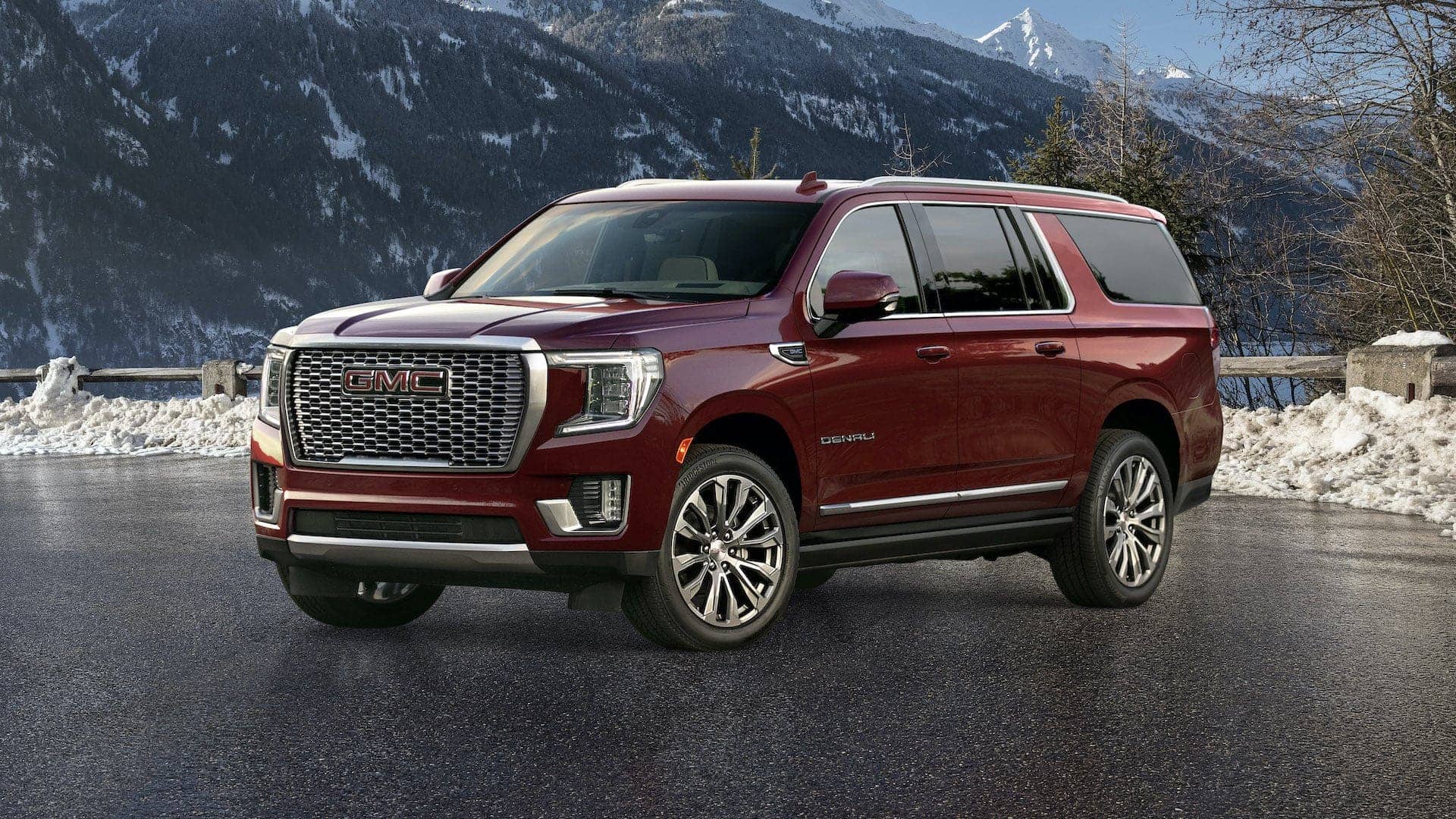
2021 GMC Yukon XL Denali
© GMCAlthough the Cullinan may be out of reach for most mortals, the new 2021 GMC Yukon XL Denali demonstrates just how far the luxury SUV world has come. GMC has pushed the status of the Denali trim even further into the premium market, with an exclusive interior and more technology.
A new instrument panel, different seats, and a gigantic Galvano chrome front grille help to distinguish it from regular Yukons. Also standard is a HD Surround Vision camera system, 15-inch color Head-up Display, and Magnetic Ride Control.
-
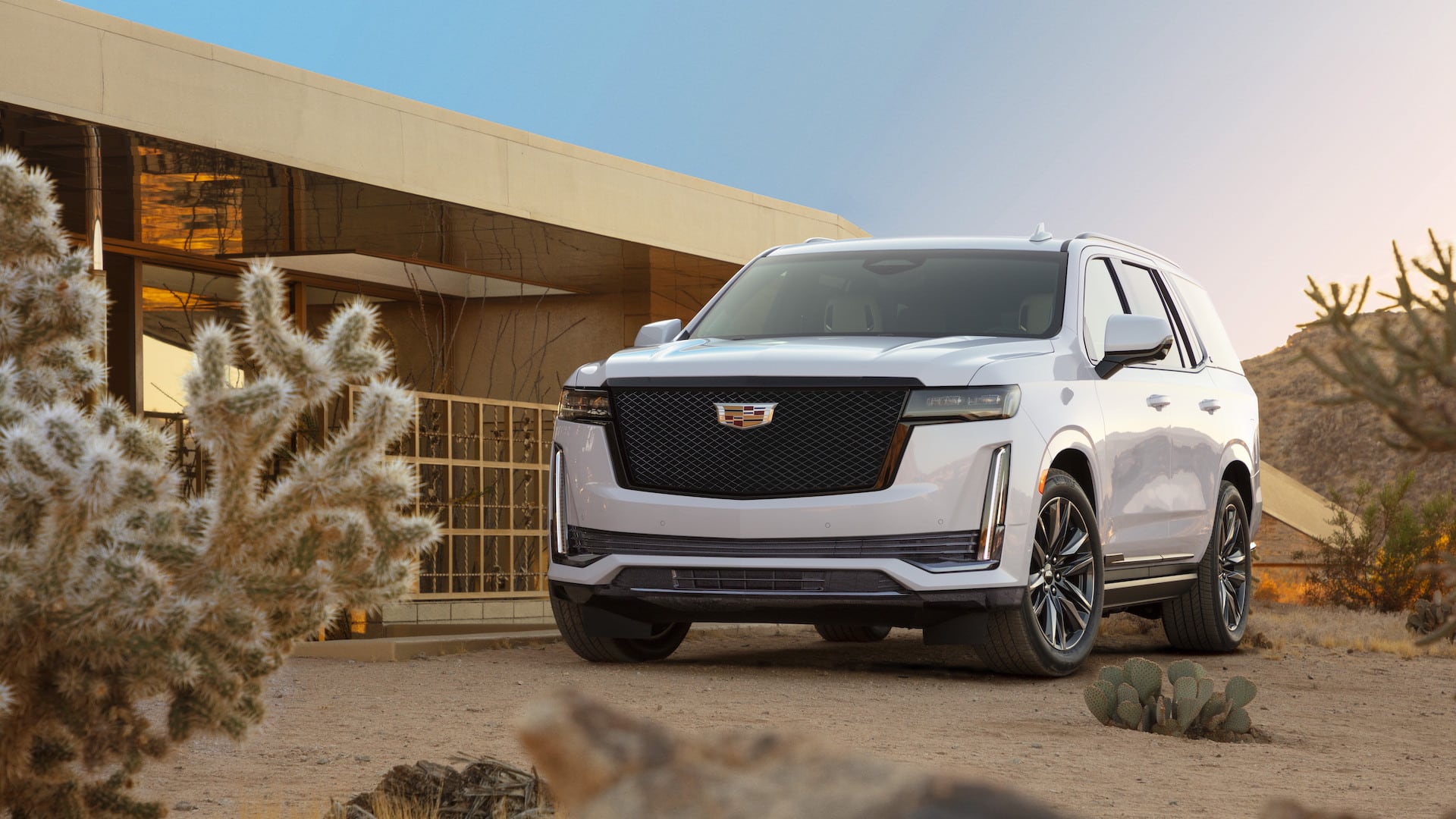
2021 Cadillac Escalade
© CadillacIf the new Yukon Denali goes more upmarket, that means the 2021 Cadillac Escalade has to take things even further. The centerpiece of the new Caddy SUV is the digital dashboard, featuring multiple curved OLED screens with touchscreen technology. Augmented Reality navigation is also optional, along with a 36-speaker AKG sound system.
GM has enhanced the 6.2-liter V-8 engine for the new Escalade, with an output of 420 horsepower. Cadillac will also offer the first diesel Escalade, with a 3.0-liter turbocharged six-cylinder engine, aimed at those who want to tow in ultimate luxury.
-
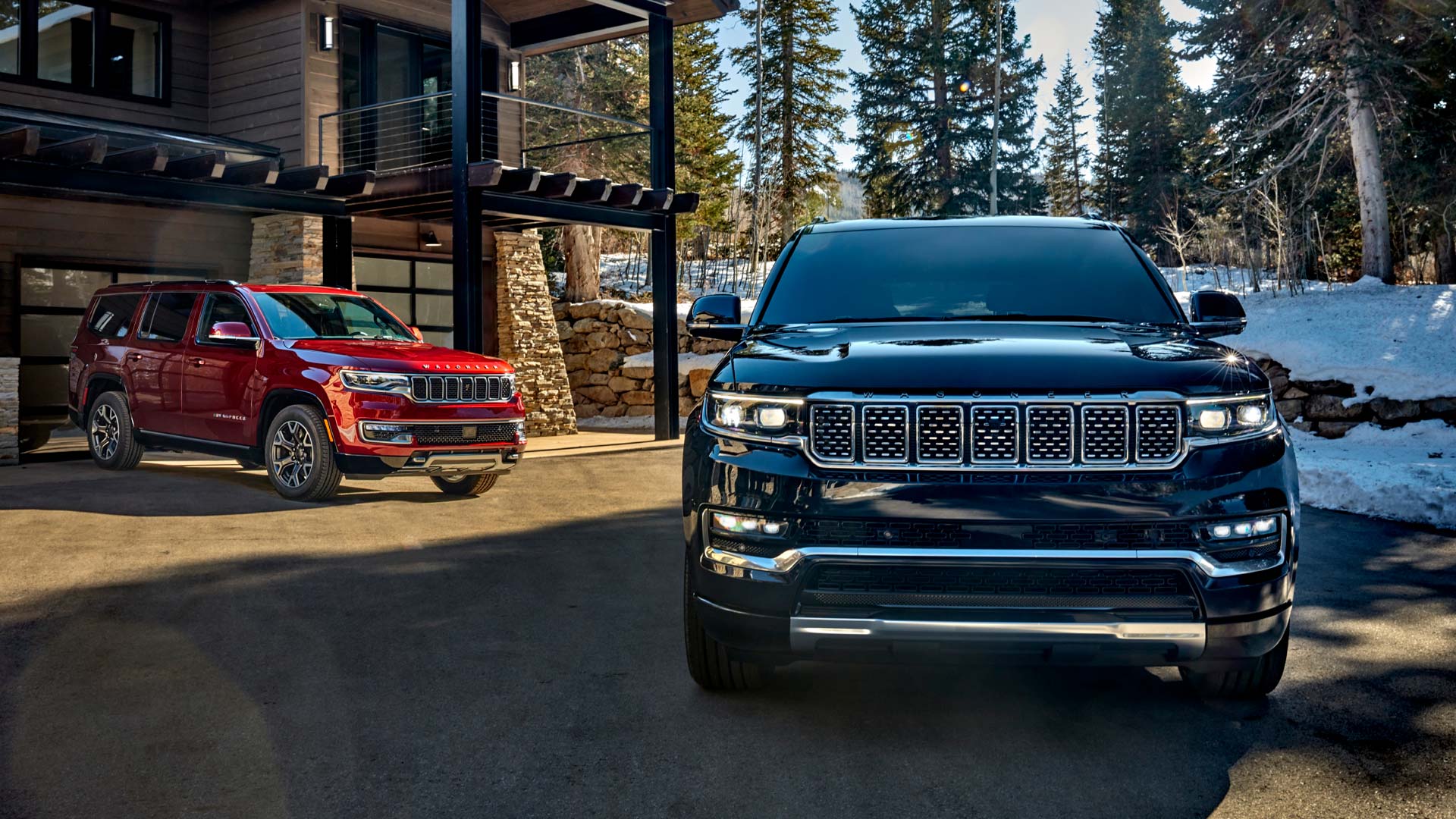
2022 Jeep Wagoneer and Grand Wagoneer
© StellantisWith the return of the Wagoneer name, Jeep is looking to create a new ‘American Premium’ brand, helping push the company deeper into luxury territory.
Both the Wagoneer and Grand Wagoneer offer three-row seating, with options to carry up to eight people. Best-in-class towing abilities, a luxurious interior and a refined driving experience are all promised by Jeep’s new sub-brand.
-
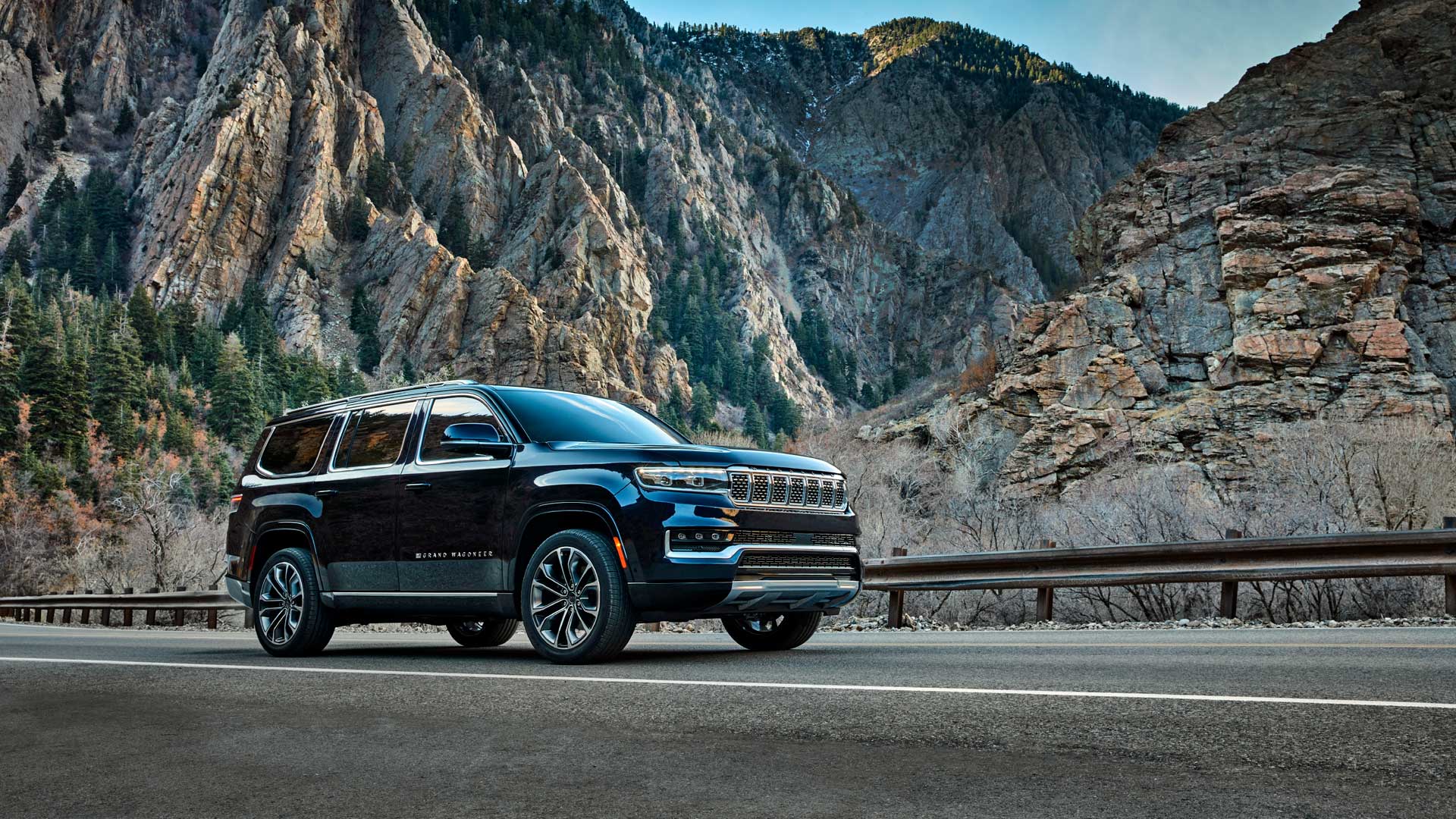
2022 Jeep Grand Wagoneer
© StellantisTopping the range is the Grand Wagoneer, named after the high-end model released in 1984. Sadly, Jeep has dispensed with the exterior wood grain vinyl trim, but there are still neat touches on the exterior of the Grand Wagoneer.
The seven-slot front grille has laser-etched rings incorporated into its design, similar to the finish found on luxury watches. The front and side windows are acoustic laminated glass, while LED lighting is also used extensively.
All Grand Wagoneers use a 6.4-liter V-8 that produces 471 horsepower and 455 lb-ft of torque. An eight-speed TorqueFlite automatic transmission is standard, along with air suspension and choice of all-wheel-drive systems.
-
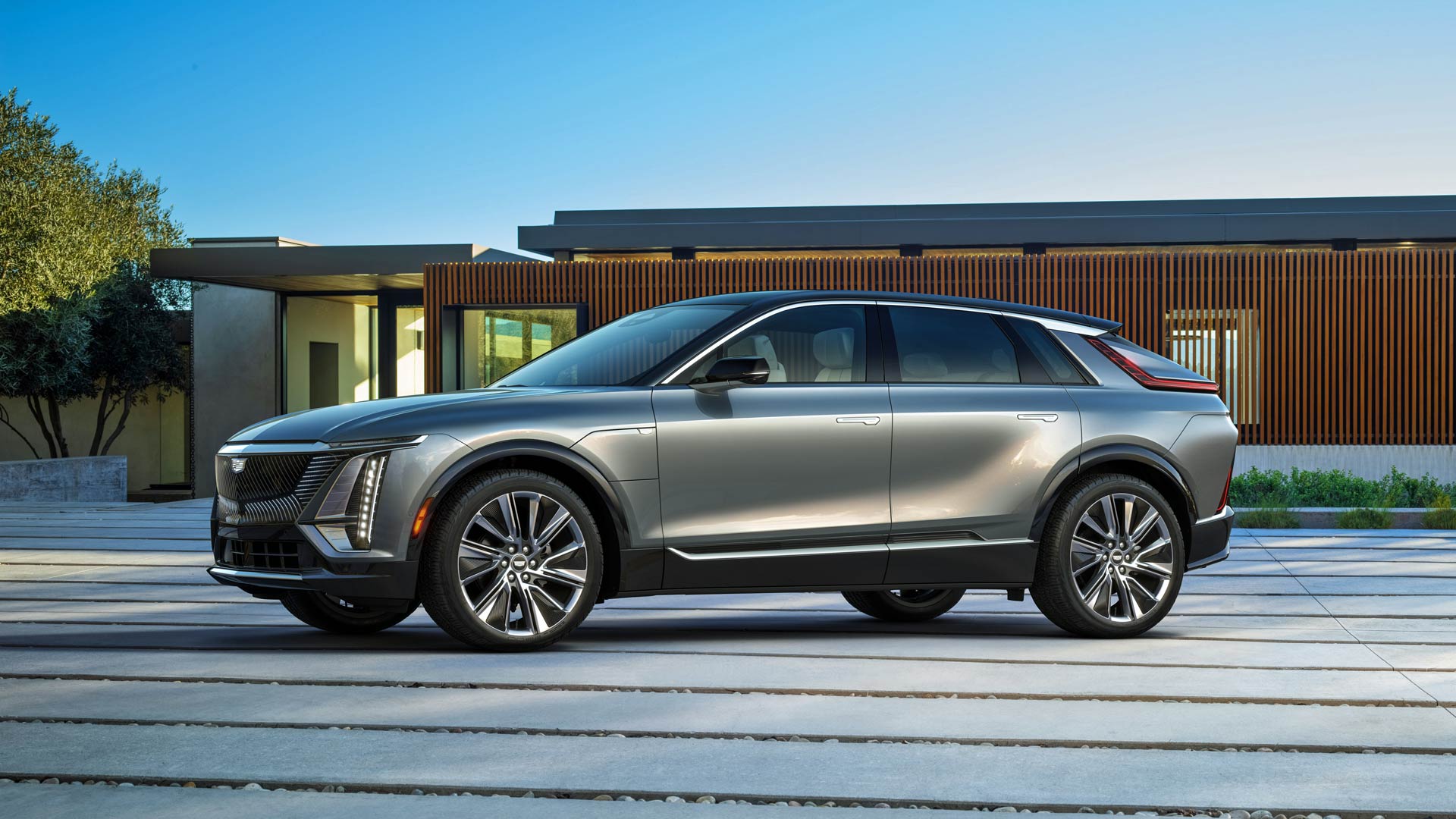
2023 Cadillac Lyriq
© CadillacThe Cadillac Lyriq was one of the first fully electric luxury SUVs to hit the market. Fitted with a 100kWh battery, the Lyriq can cover up to 312 miles when fully charged, using a 340 horsepower electric motor.
Inside, the mid-size Cadillac boasts a 33-inch LED multimedia display, active noise cancellation and a 19-speaker AKG Studio sound system. Cadillac also includes its Super Cruise option, which it bills as the ‘first true hands-free driver-assistance technology’.
Production takes place at Cadillac’s Spring Hill factory in Tennessee, and at its EV-only facility in Yantai, China.
-
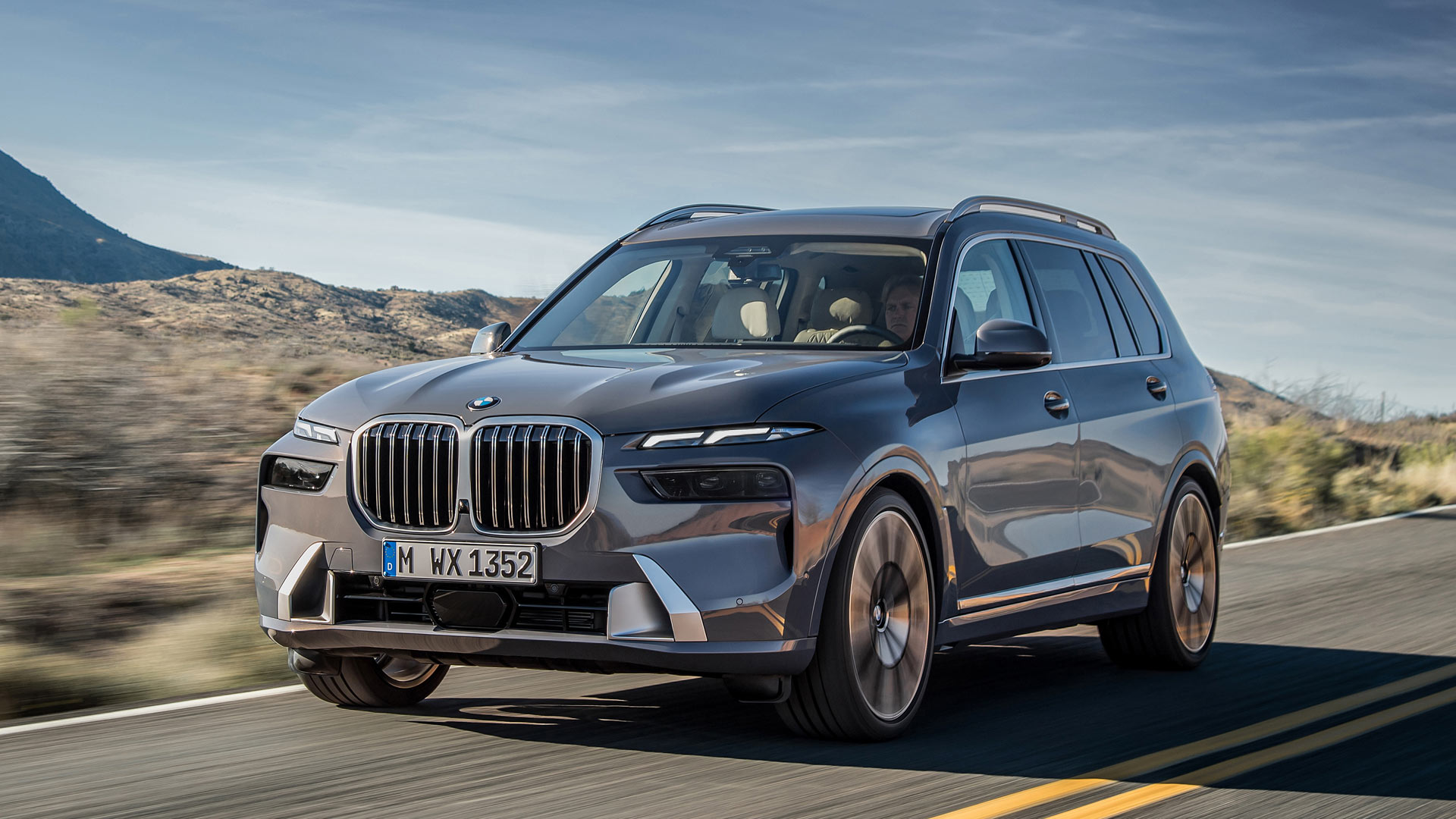
2023 BMW X7
© BMWBuilt at BMW’s Spartanburg facility in South Carolina, the X7 became the company’s largest SUV when it entered production in 2018. Stretched to offer full three-row seating and increased cargo space, the X7 certainly turned heads with its giant front grille.
For the 2023 model year, BMW has given the X7 a bold new look, featuring horizontally split LED headlights. Customers can also choose to have the grille illuminated with cascading LEDs.
Engine options range from a 375 horsepower turbocharged six-cylinder unit to a 523 hp 4.4-liter twin-turbo V-8.
-
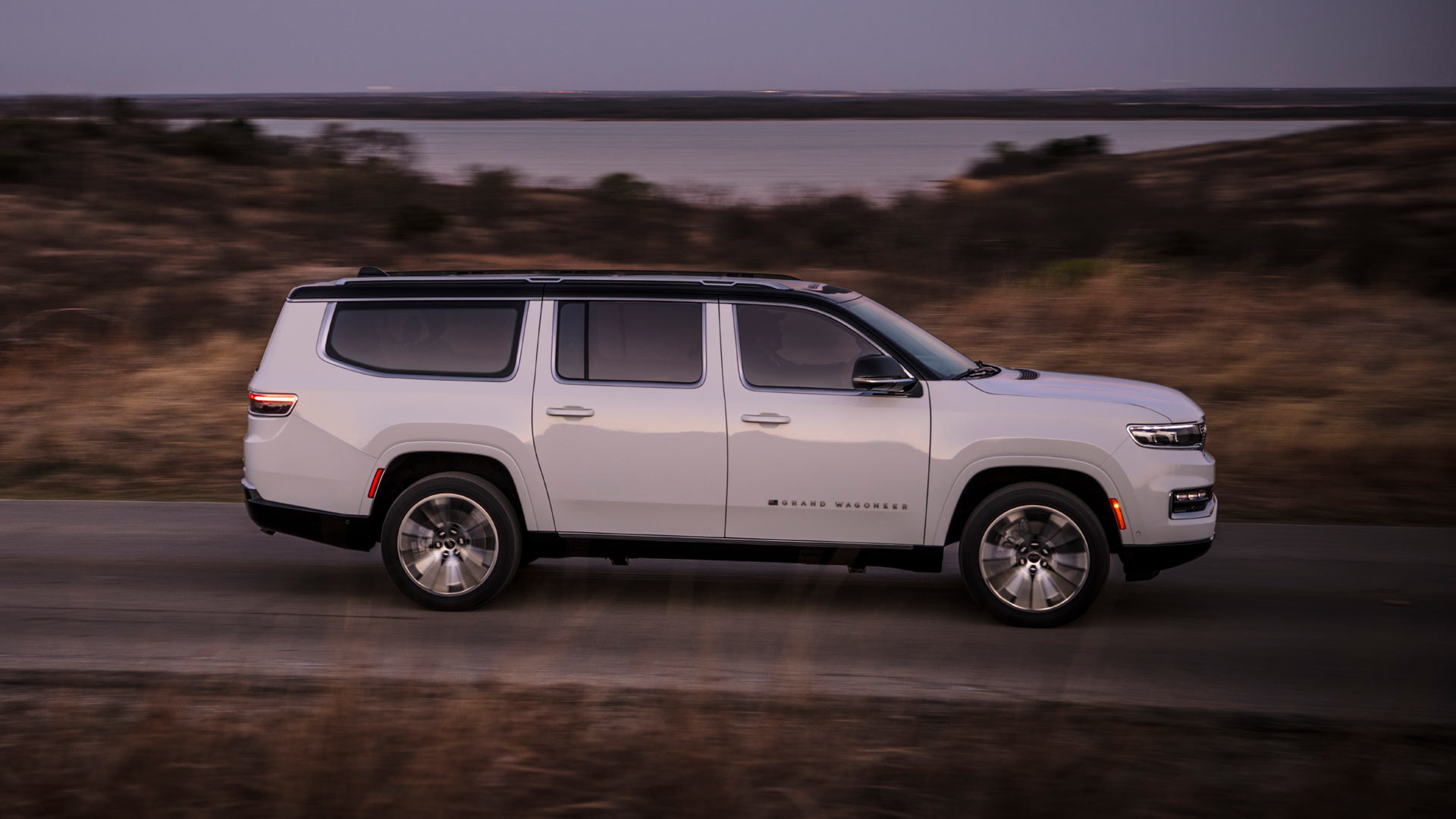
2023 Jeep Grand Wagoneer L
© StellantisFollowing the launch of the Wagoneer and Grand Wagoneer, Jeep moved quickly to introduce the long-wheelbase L models. Stretching the bodywork by 12 inches increased cargo space, offering some useful extra practicality.
The updated Wagoneer and Grand Wagoneer L models also mark the debut of the 3.0-liter ‘Hurricane’ twin-turbo inline six-cylinder engine family. Said to rival V-8 engines for performance, outputs range from 420 to 510 horsepower.
-
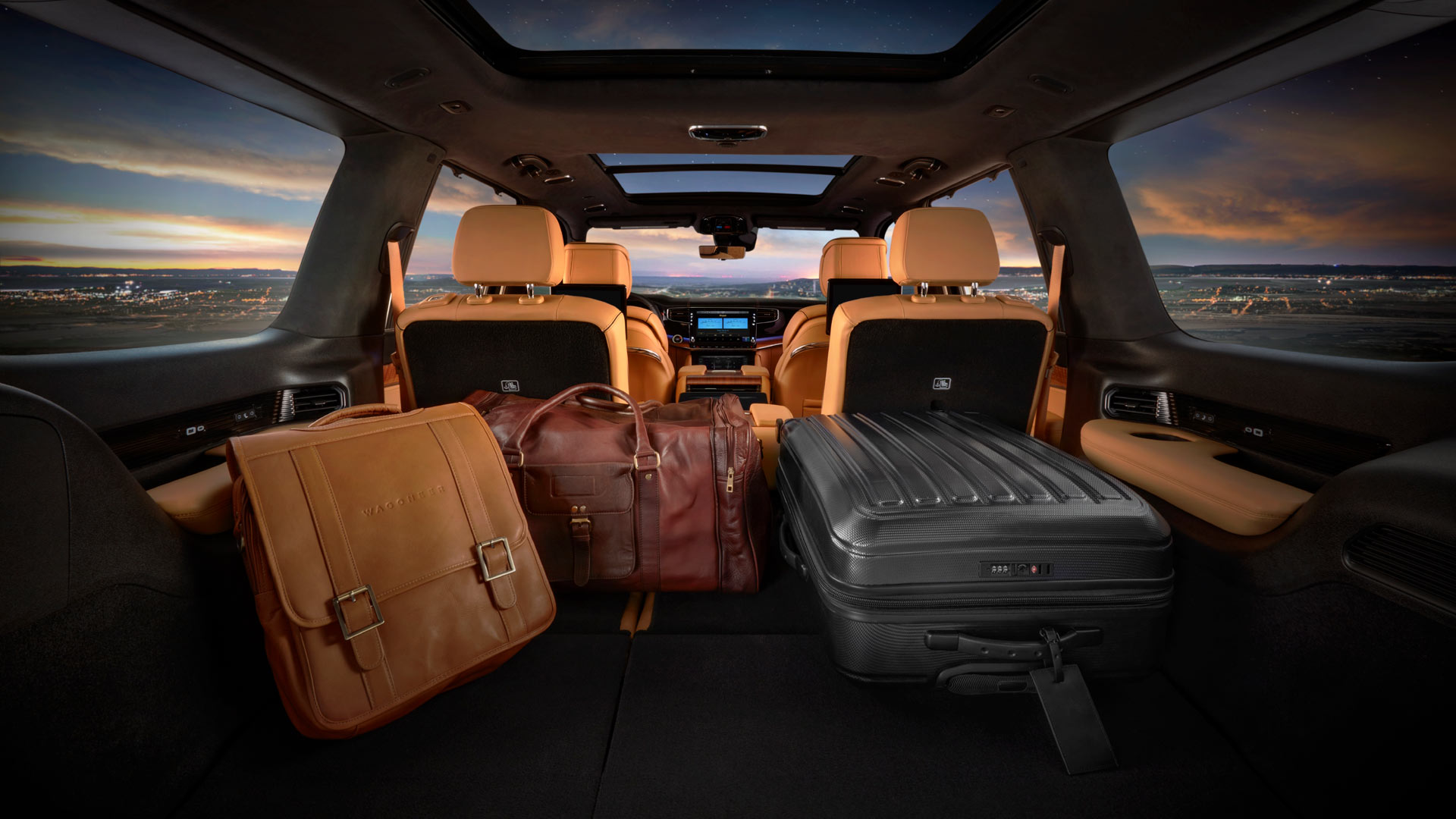
2023 Jeep Grand Wagoneer L
© StellantisWith longer bodywork, the Grand Wagoneer L boasts the most space behind the third-row seats in its class. This peaks at 44.2 cubic feet of cargo space, allowing owners the combination of seven people and their luggage together. New third-row luggage compartments give each passenger 1.8 liters of space for personal belongings.
The Grand Wagoneer L can hold 88.8 cubic feet of space behind the second row, and carry a 4-by-8-foot sheet of plywood with all the rear seats folded flat.
It demonstrates that while the new Grand Wagoneer L may be luxurious, it still boasts the practicality of its predecessors.
-
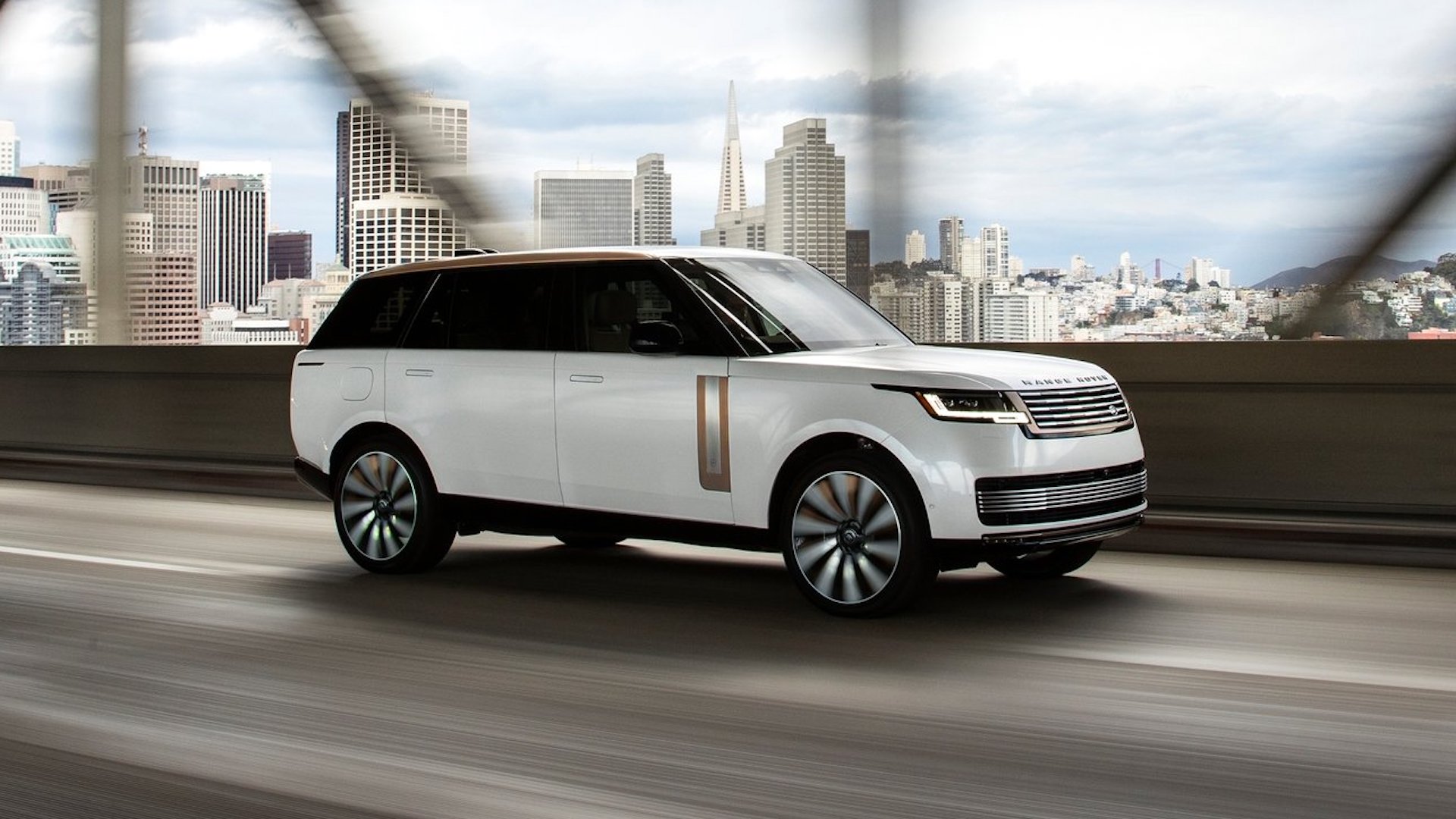
2023 Range Rover SV
© JLRThe Jeep Wagoneer may have been responsible for the luxury SUV craze, but the Range Rover has been a constant for more than 50 years. Launched in 2022, the latest, fifth-generation model has brought new changes to the luxury 4×4 world.
This marks the first time the Range Rover has been offered in a three-row, seven-seat configuration. This helps it take on rivals such as the Jeep Grand Wagoneer L and Mercedes-Benz GLS.
There are also more powertrain options than ever before, including two plug-in hybrids. Demonstrating that the Range Rover is keeping up with the times, a fully electric version is due in 2024.
-
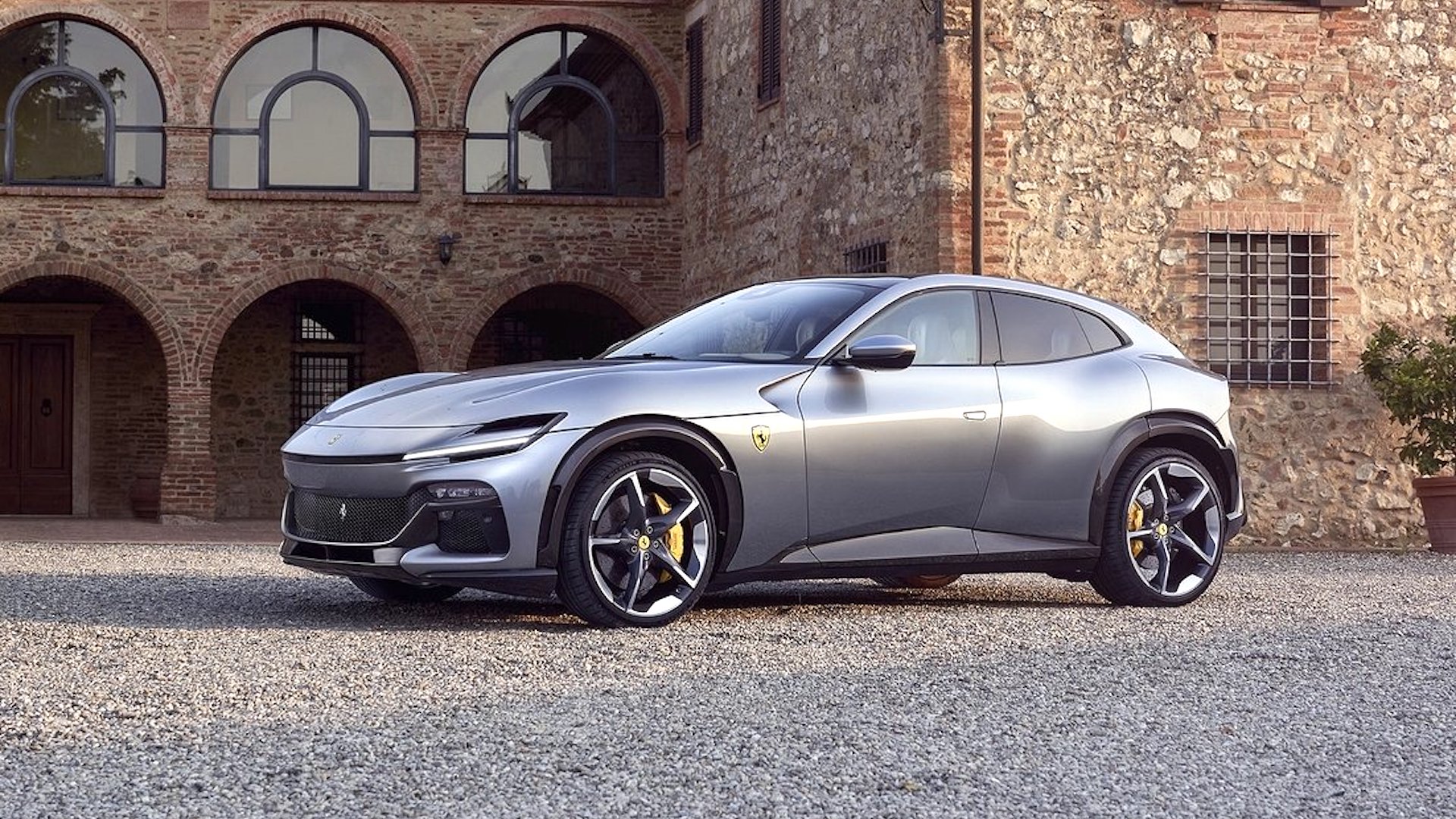
2023 Ferrari Purosangue
© FerrariWhen is a luxury SUV not to be called an SUV? When it is a Ferrari, of course. Instead, the company prefers to describe the Purosangue as ‘a car like no other’, albeit one with a raised ride height and all-wheel drive.
The Purosangue is Ferrari’s first production four-door car, and based upon the same platform as the Roma GT. Rear-hinged back doors add some extra drama, and are said to make it easier to access the two rear seats.
Performance comes for a naturally aspirated 6.5-liter V-12 engine that develops 725 horsepower. The result is the ability to sprint from 0-62 mph in 3.3 seconds, and on to a top speed of 193 mph.
-
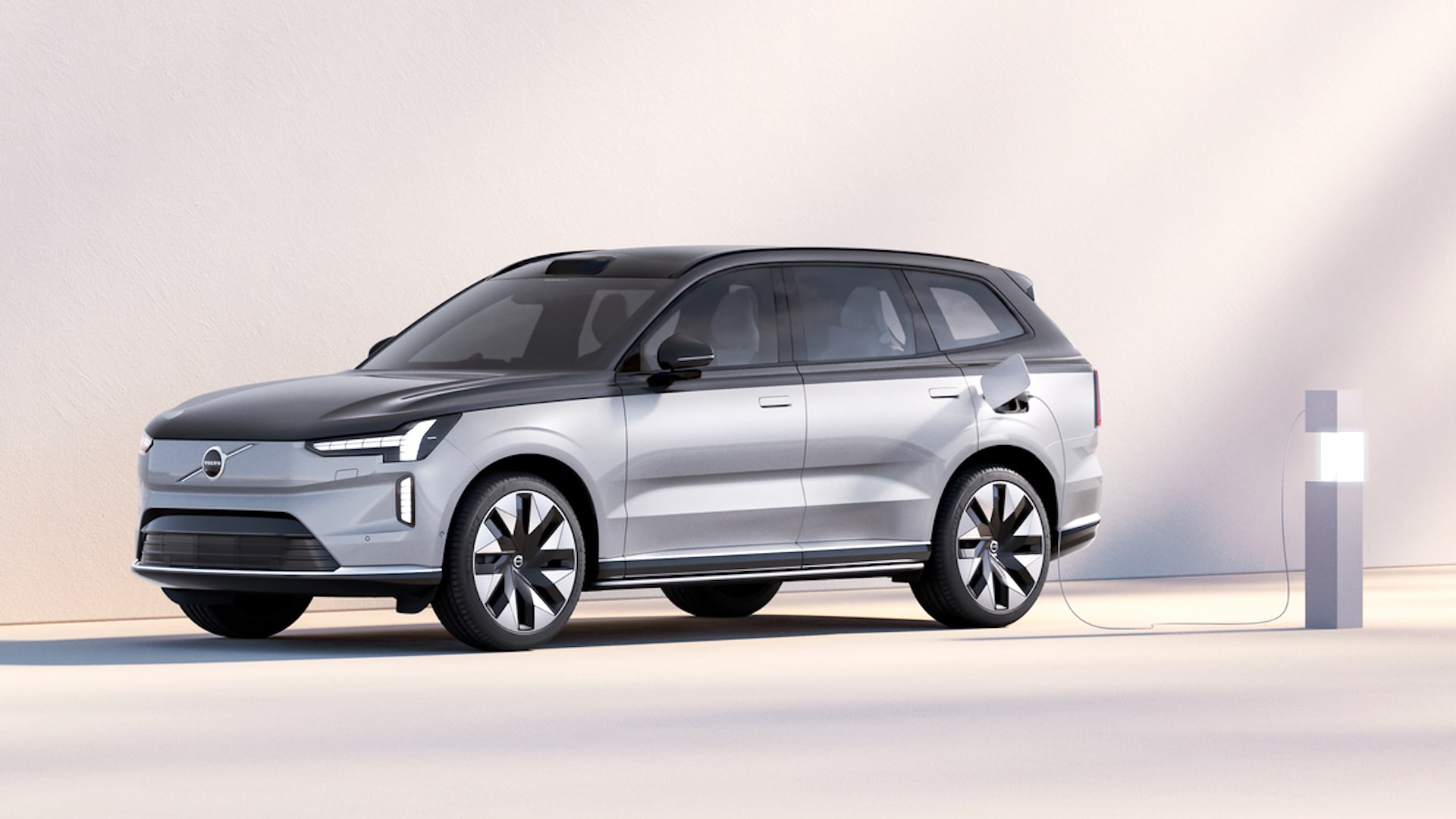
2024 Volvo EX90 Excellence
© VolvoAfter two decades and two successful versions of the XC90, Volvo has dropped its conventional luxury SUV for the all-electric EX90. With the Swedish brand on a path to full electrification, the seven-seat EX90 marks an important step along the way.
The EX90 will come with two powertrain options, letting buyers pick from a base rear-wheel-drive model with 402 horsepower, or a 503 hp all-wheel-drive Performance version. Range will be up to 370 miles when fully charged.
A flagship Excellence model will challenge the most opulent SUVs, with two-tone paintwork and just two seats in the rear. A drinks fridge and a fragrance dispenser operated by a large Orrefors crystal are just some of the luxuries included.
-
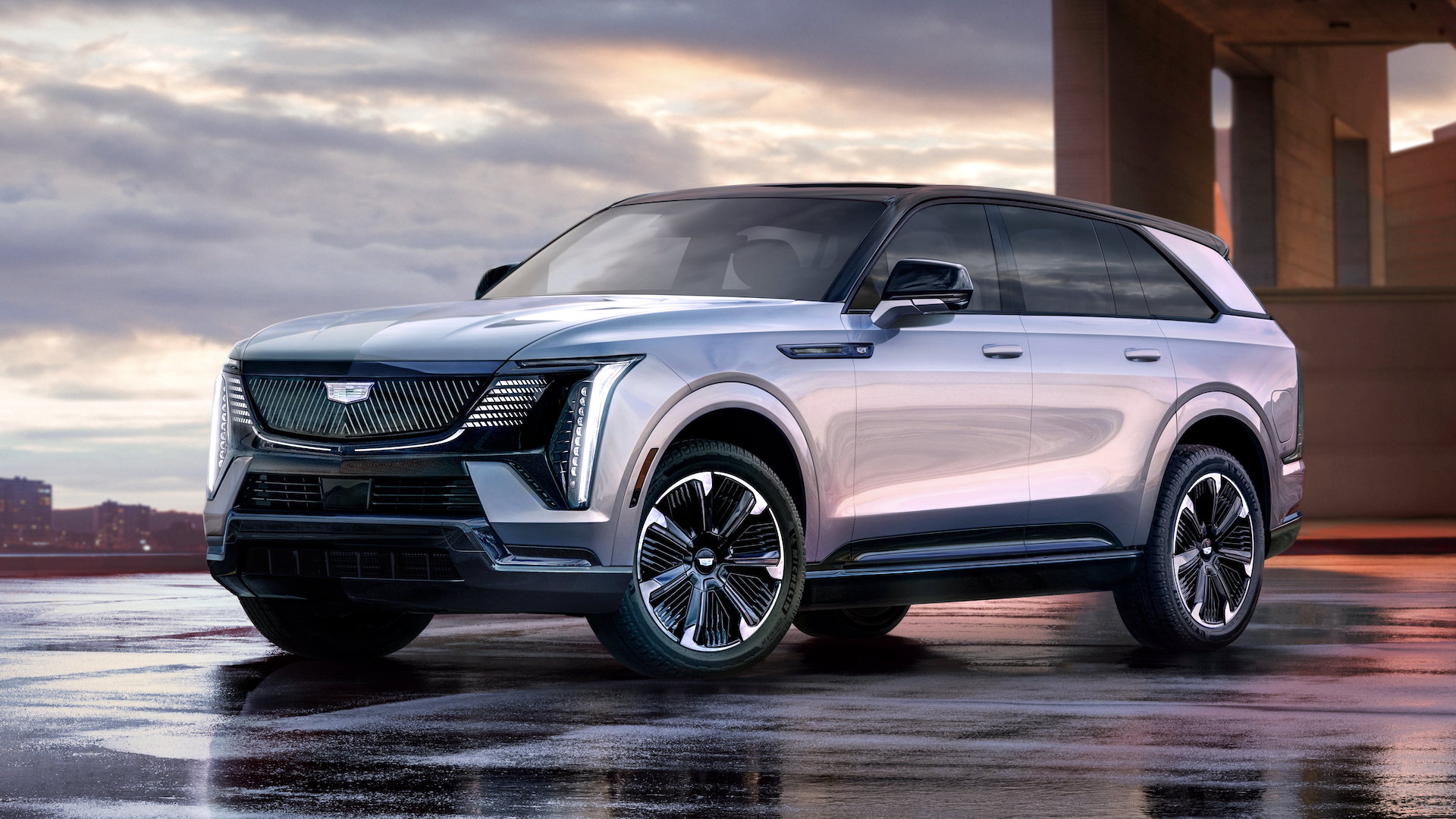
2025 Cadillac Escalade IQ
© GMGeneral Motors was there at the start of the luxury SUV trend, so it seems only right that one of its brands is leading us into the next chapter. The all-electric Cadillac Escalade IQ will make a dramatic impact on the premium SUV world.
According to John Roth, vice president of Global Cadillac, the new Escalade IQ “raises the standard just as the original Escalade redefined luxury a quarter-century ago”. He added that the “reimagining of an icon marks the next step in Cadillac’s all-electric future.”
Cadillac has gone bold with the design of the Escalade IQ, both inside and out, without the need to accommodate a traditional internal combustion engine. The result is a luxury SUV that looks familiar, but is said to be more dynamic in its design.
-
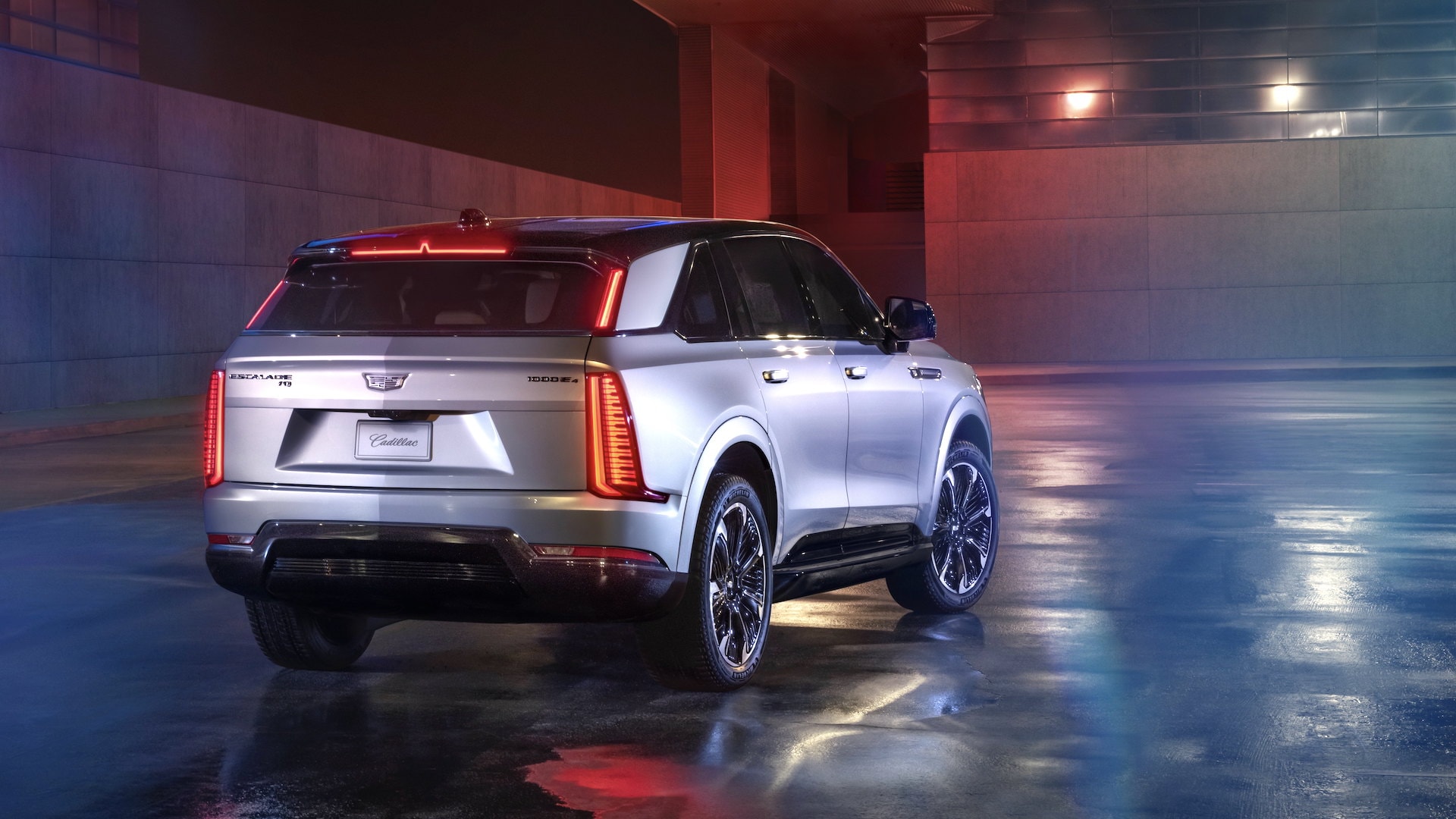
2025 Cadillac Escalade IQ
© GMBeneath the Cadillac’s bodywork is a massive 200kWh lithium-ion battery, offering an electric range of up to 450 miles. Fitted with the latest 800-volt technology, the Escalade IQ can add up to 100 miles of range in just 10 minutes.
Its twin-motor setup delivers up to 750 horsepower and 750 lb-ft of torque. This makes for a 0-60 mph time of just 5.0 seconds, plus the capability to tow up to 8,000 lb.
Along with adaptive air suspension, the Escalade IQ comes with four-wheel steering. This increases agility and reduces the Cadillac’s turning circle. A special ‘Arrival Mode’ allows the Escalade IQ to slide diagonally into parking spaces.
-
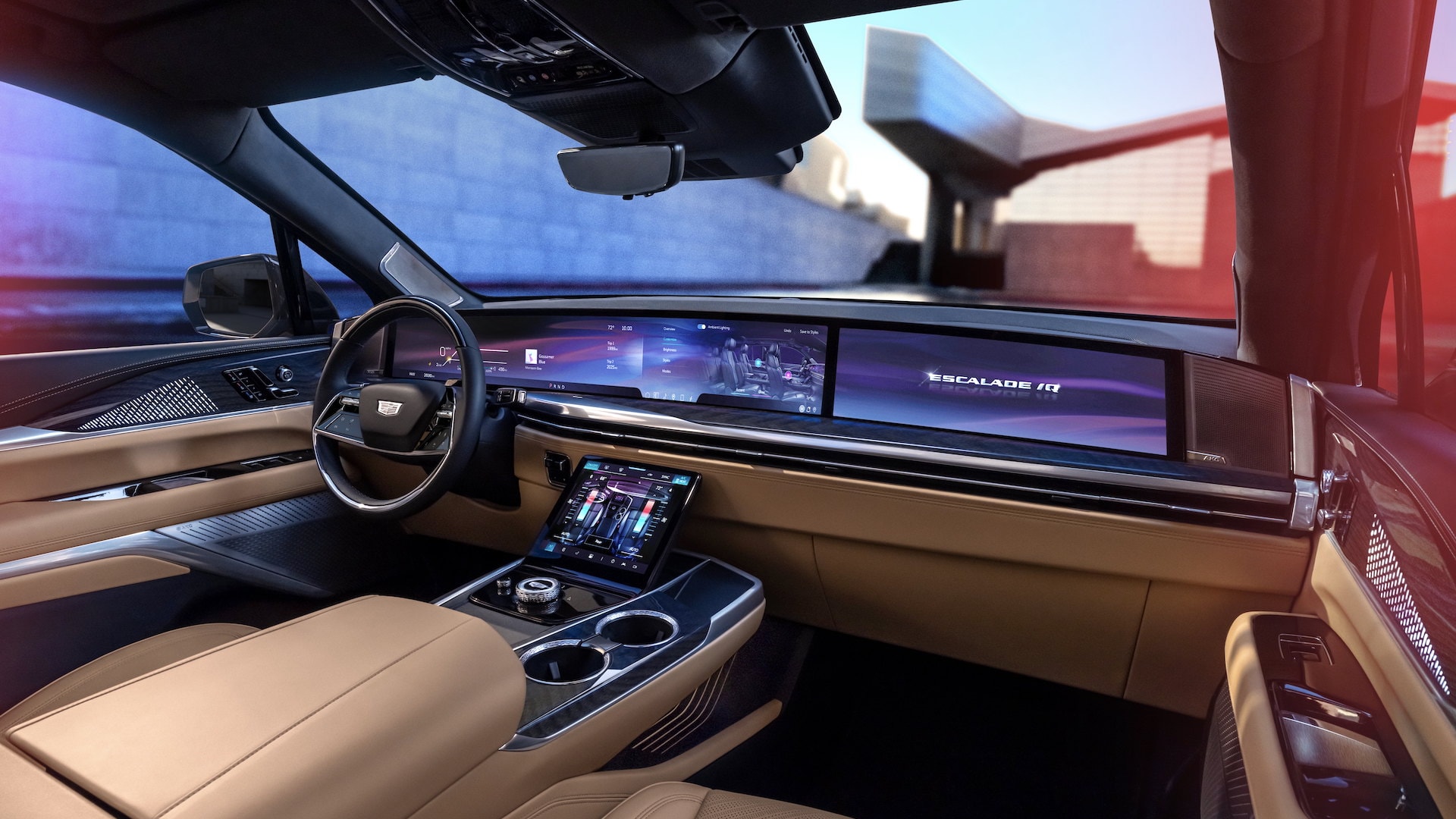
2025 Cadillac Escalade IQ
© GMThe Cadillac Escalade IQ promises to be just as dramatic on the inside, thanks to a gigantic 55-inch LED screen. Incorporating 5G technology, Cadillac says the Escalade IQ can ‘learn’ which gauges and information to display, and also operate the garage door when you arrive home.
More interior luxuries include power-folding third-row seats, a panoramic fixed-glass sunroof and an optional 40-speaker AKG Studio Reference audio system. There is even a front ‘eTrunk’, which is capable of swallowing two golf bags.
-
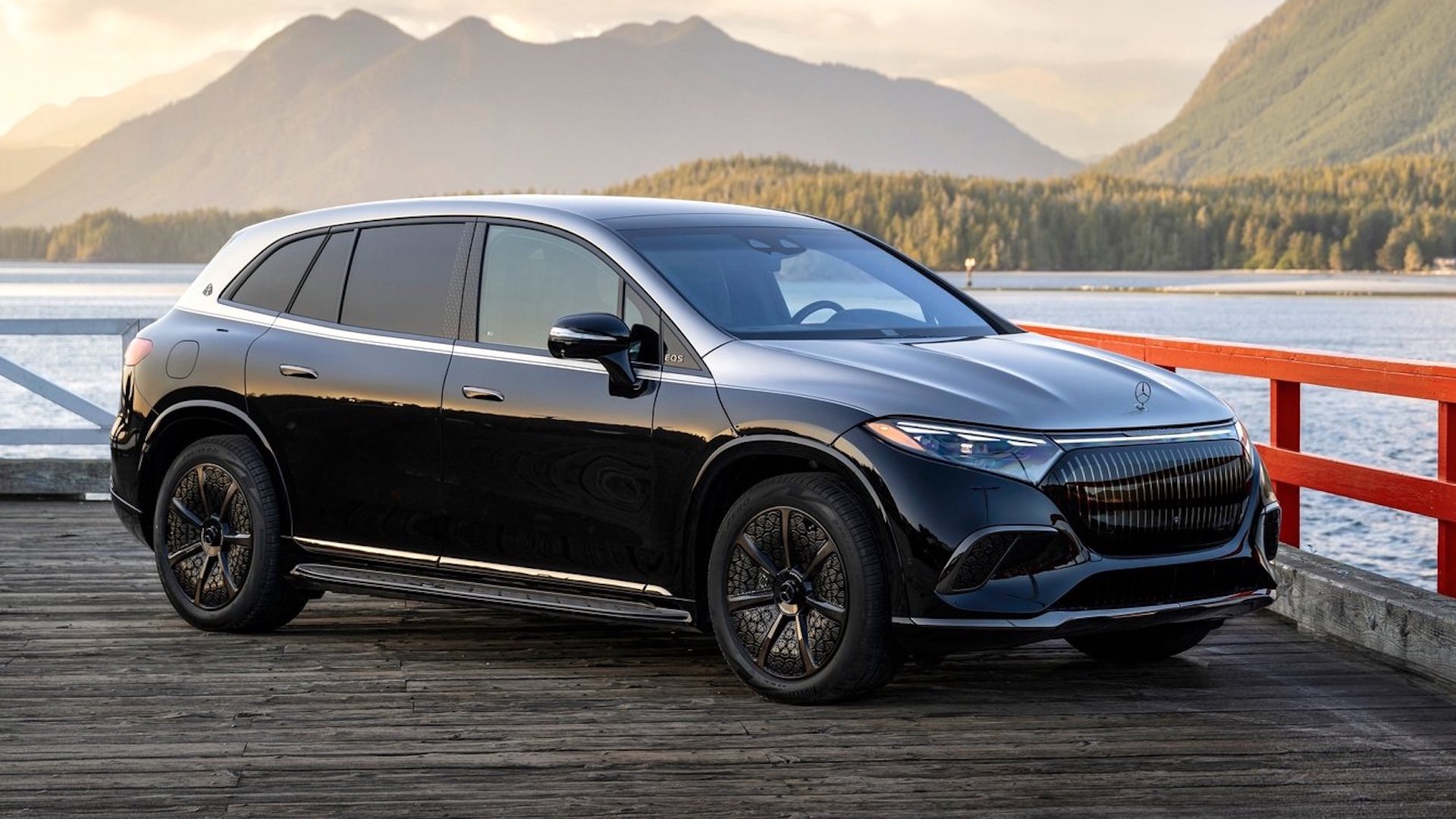
2024 Mercedes-Maybach EQS 680 SUV
© Mercedes-BenzThe Mercedes-Benz Maybach brand has produced its first electric vehicle: a sumptuous, range-topping version of the battery-powered EQS SUV.
Highlights include automatically opening and closing doors, vegetable-tanned Nappa leather and a center console with space to chill champagne bottles. Matching silver-plated goblets are on the options list.
A total of 658 horsepower can accelerate the Maybach EQS from 0-62 mph in 4.4 seconds, while its 107 kWh battery offers a potential range in excess of 350 miles. North America will be the first market to receive the new electric Maybach.
-
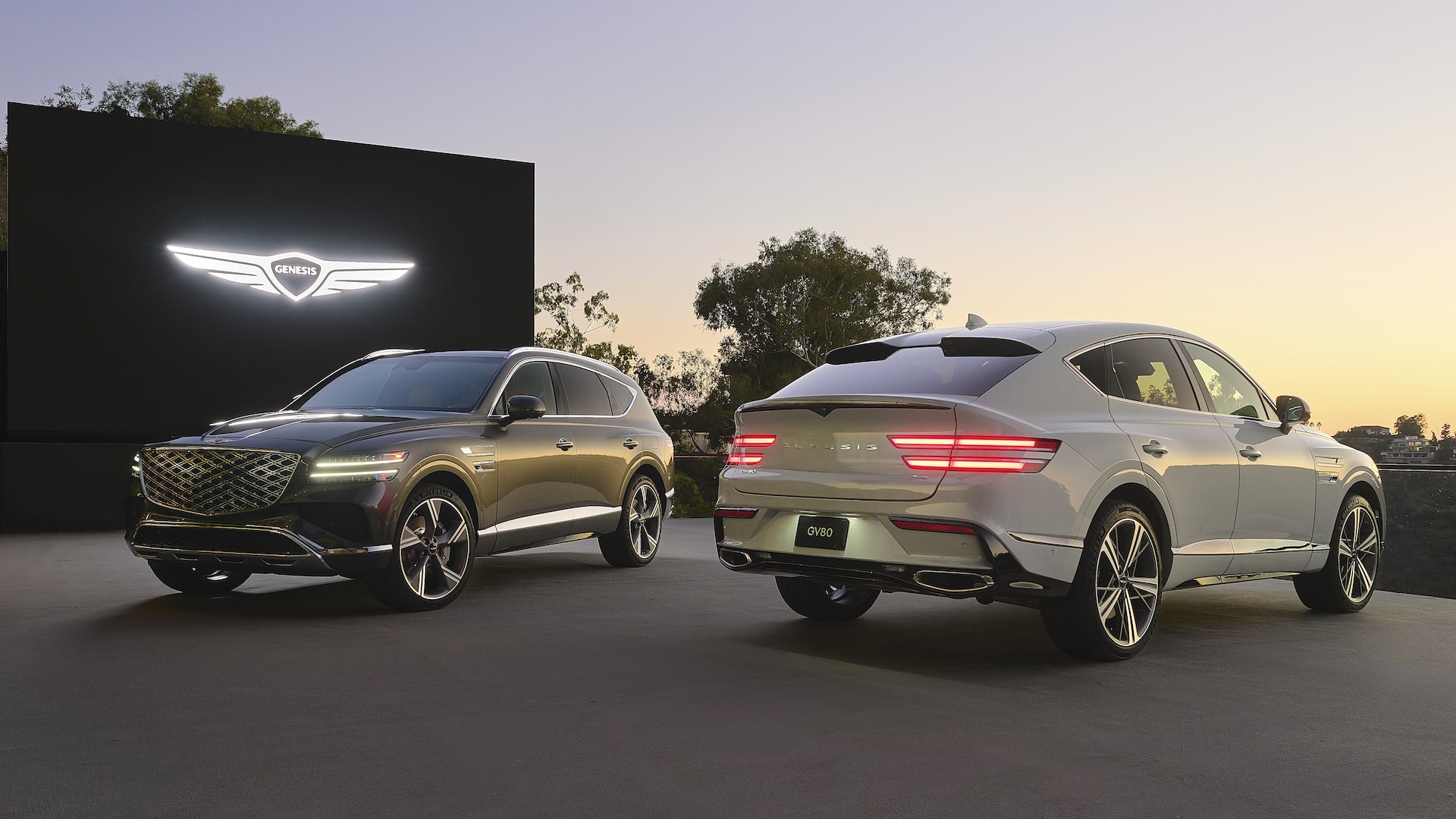
2025 Genesis GV80 Coupe
© GenesisGenesis has finally succumbed to the lure of the SUV coupe trend, revealing an additional version of the GV80 at the 2023 LA Auto Show.
The GV80 Coupe benefits from a curvaceous roofline, which sweeps down to a tailgate with a central rear spoiler. Full-width LED surface-emitting rear combination lamps, plus a wide integrated auxiliary brake light, are found at the rear of the car, too.
Two engine options will be offered by Genesis for the GV80 Coupe, including a 409 horsepower twin-turbocharged 3.5-liter V-6.
-
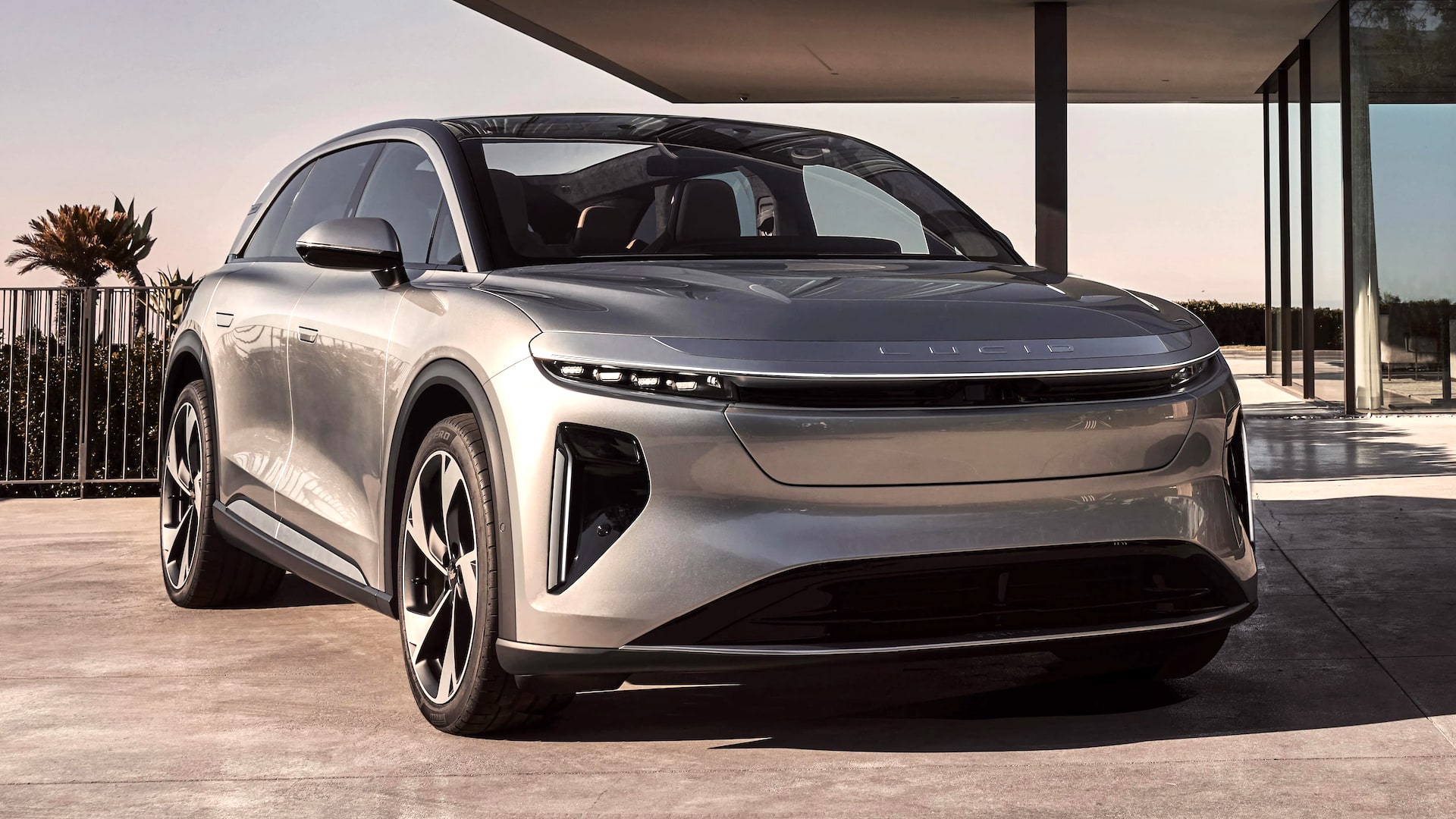
2025 Lucid Gravity
© LucidCalifornia-based Lucid Motors has already tasted success with its award-winning Air electric sedan. Now it is moving into the SUV market. The Gravity combines a luxurious interior with impressive technology and a sizable battery range.
The Lucid Gravity will come with three rows of seats as standard, giving the capacity to carry seven adults. Lucid promises plenty of room for all, along with second- and third-row seats that fold flat for 112 cubic feet of usable cargo space.
An aerodynamic body shape boasts a drag coefficient of just 0.24 Cd, aiding the car’s range and performance.
-
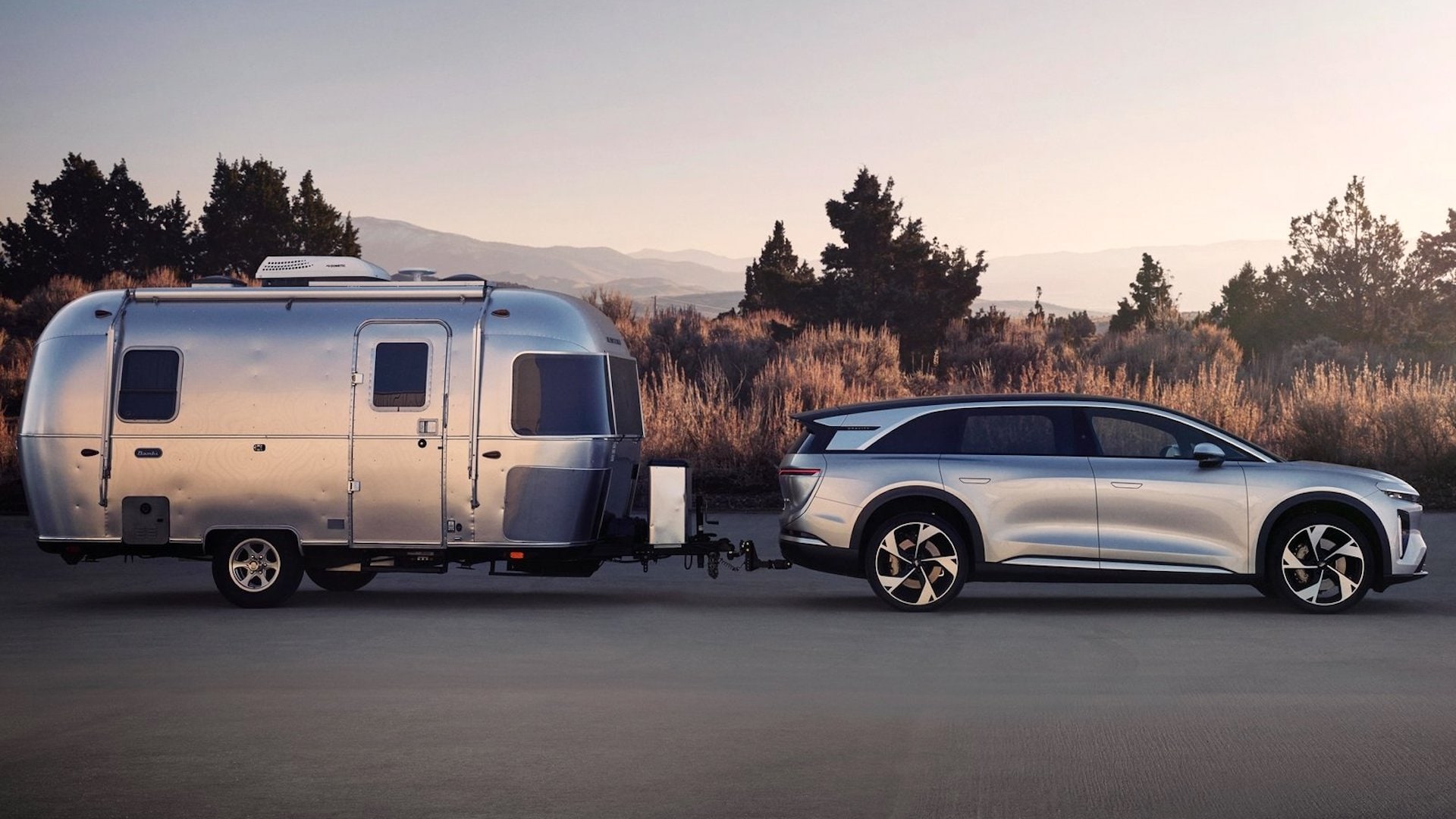
2025 Lucid Gravity
© LucidThe Lucid Gravity will feature a dual-motor setup, generating more than 800 horsepower. With all-wheel drive, this should see the Gravity capable of accelerating from 0-60 mph in less than 3.5 seconds.
The Gravity uses 900-volt charging technology that allows up to 200 miles of range to be added in 15 minutes – when connected to a powerful enough charger, at least. With full batteries, the Gravity is expected to cover up to 440 miles.
Adding to the usability of the Gravity is the ability to carry 1,500 lb, and also tow up to 6,000 lb – impressive for an EV.
-
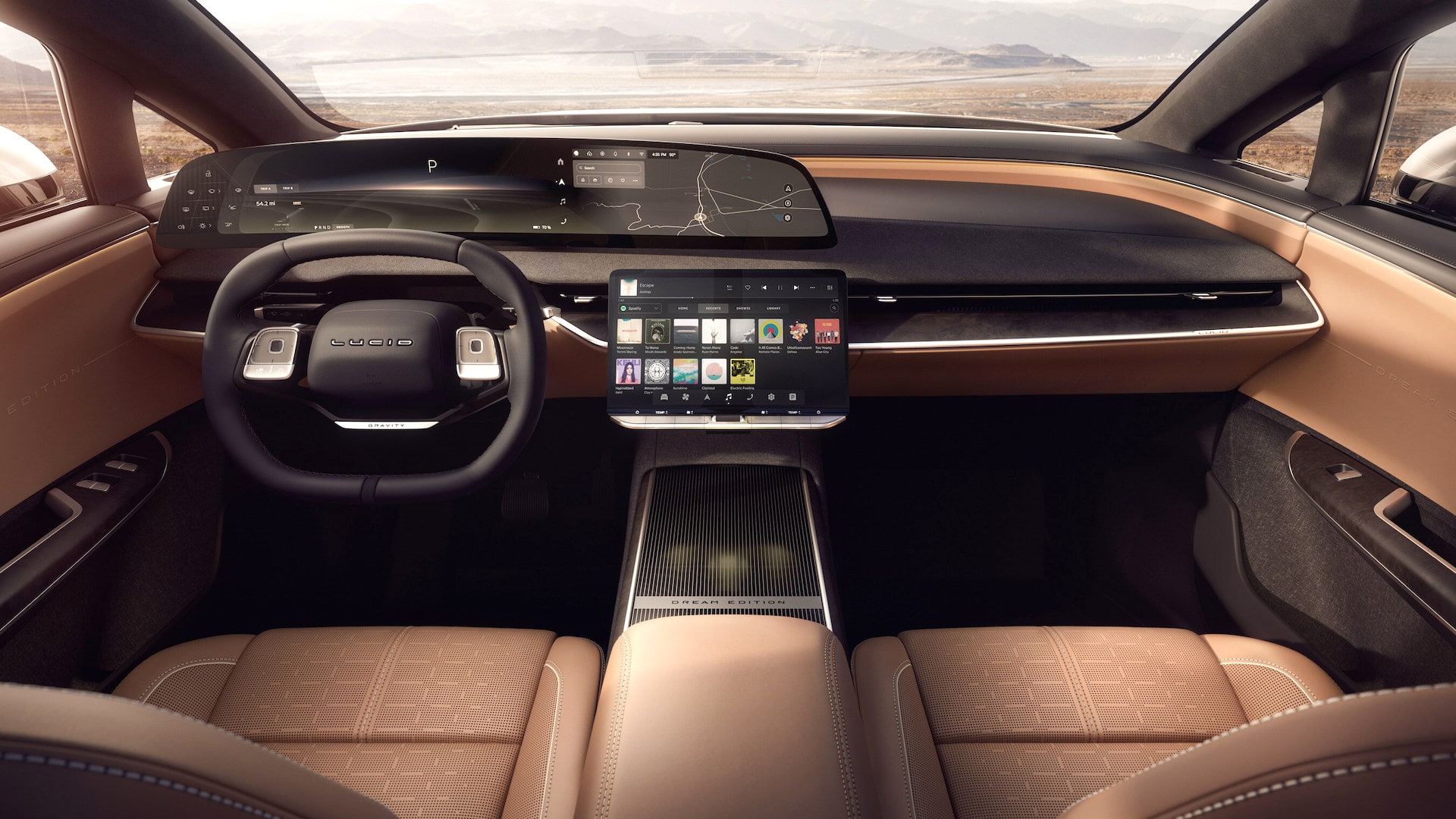
2025 Lucid Gravity
© LucidTo deliver the ultimate luxury experience, Lucid has given the Gravity interactive wellbeing features that it calls Lucid Sanctuary and Lucid Spaces. These can transform the SUV into a relaxation zone while charging, or even immerse drivers in the atmosphere of being at Lake Tahoe or Joshua Tree national park.
A 34-inch floating 6K display is standard, along with a 22-speaker premium sound system. A glass center console and Lucid’s Pilot Panel infotainment system also feature inside the car.
Prices for the Lucid Gravity are expected to start at less than $80,000, with production scheduled to commence in late 2024.